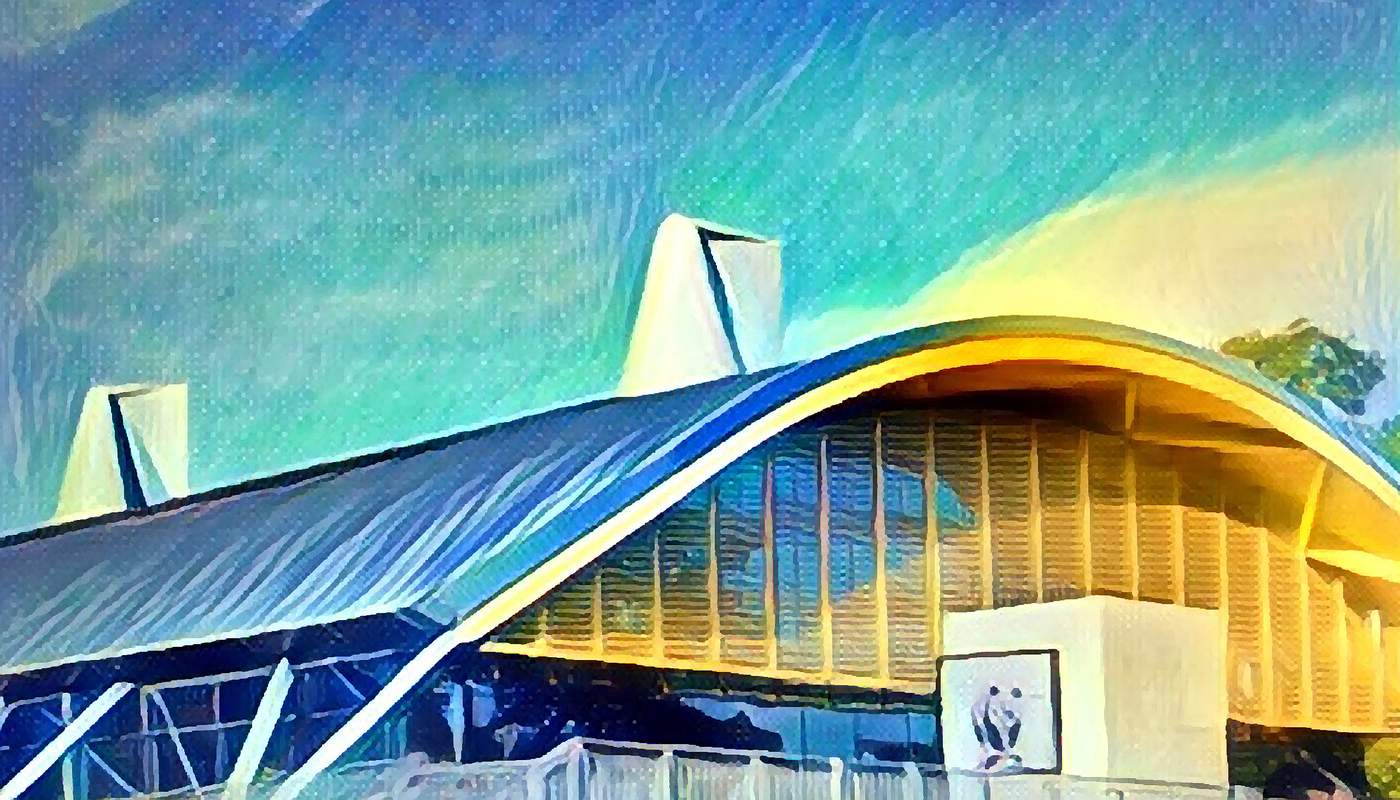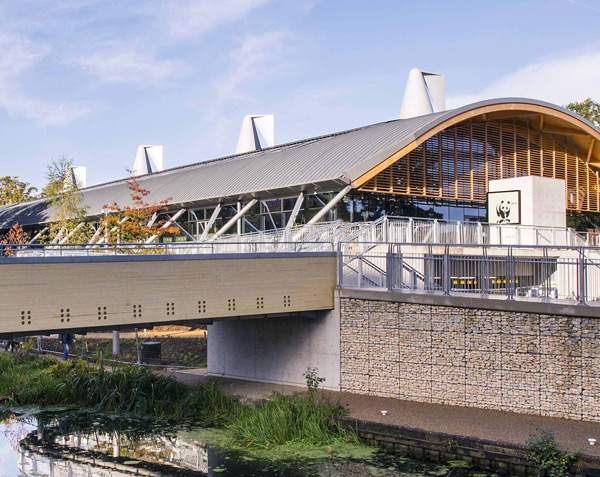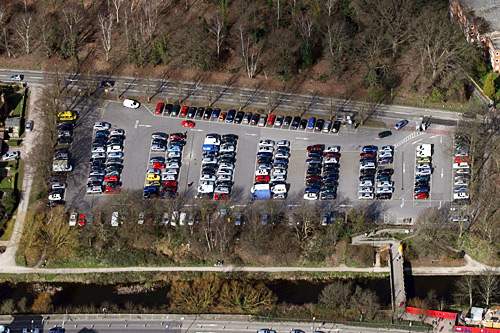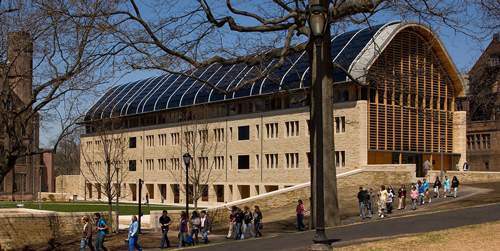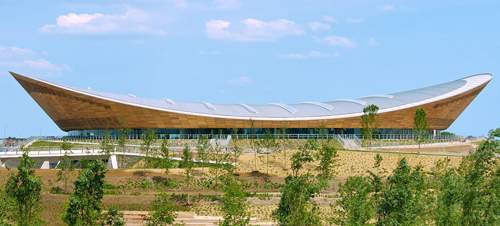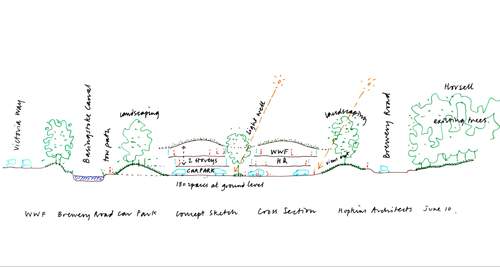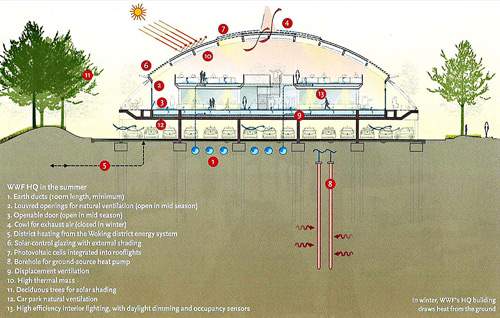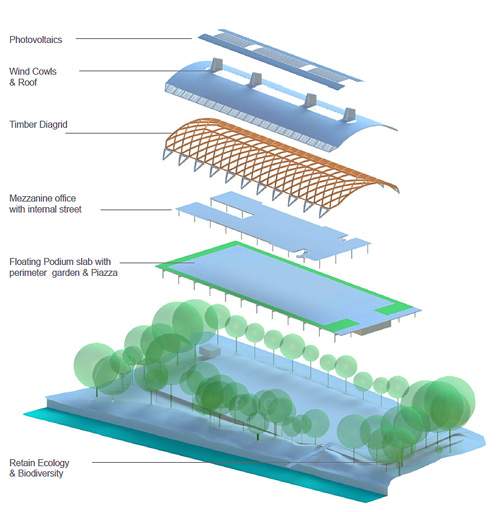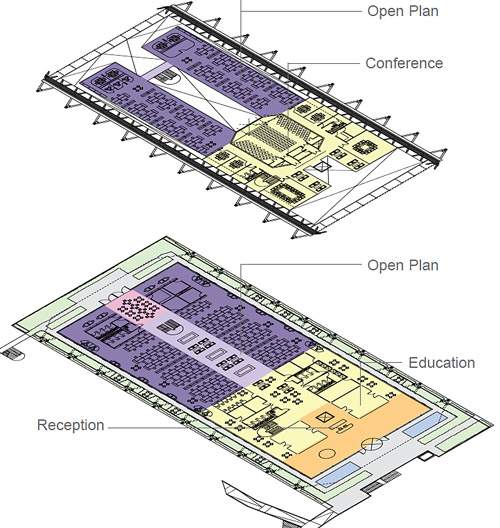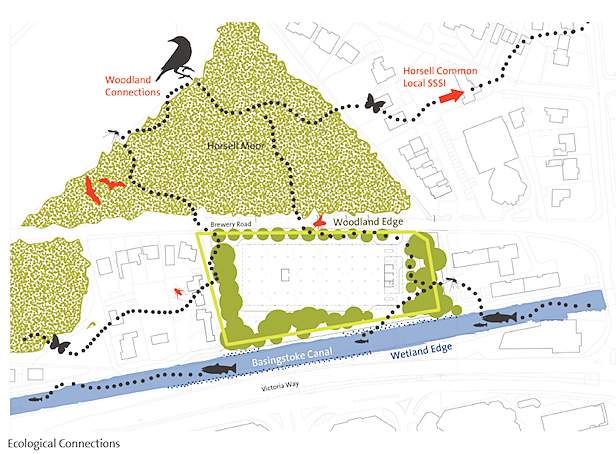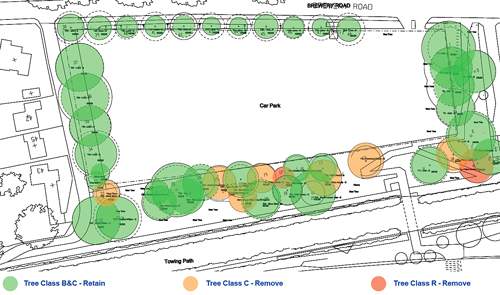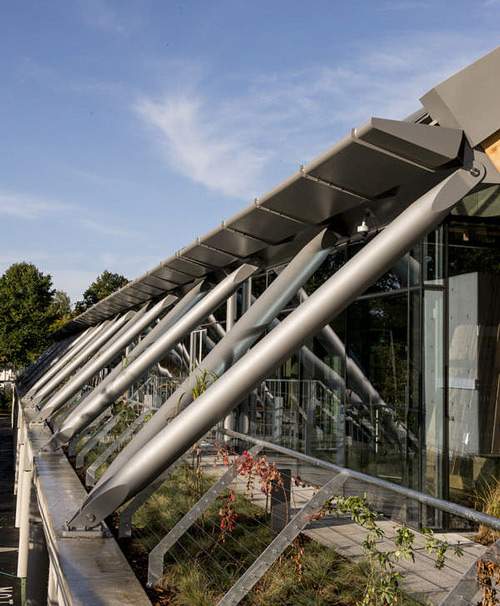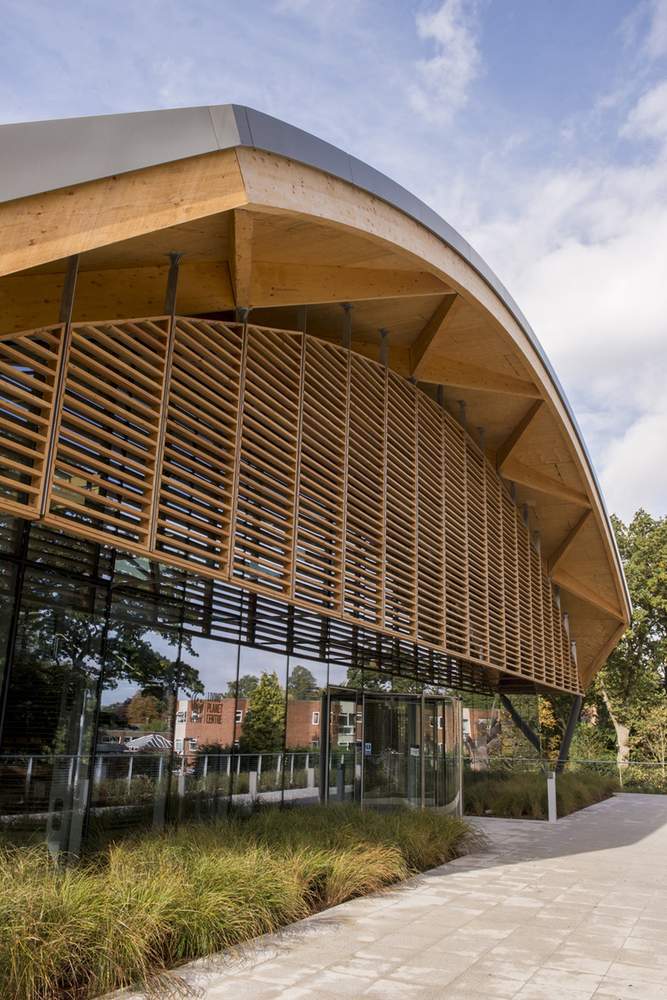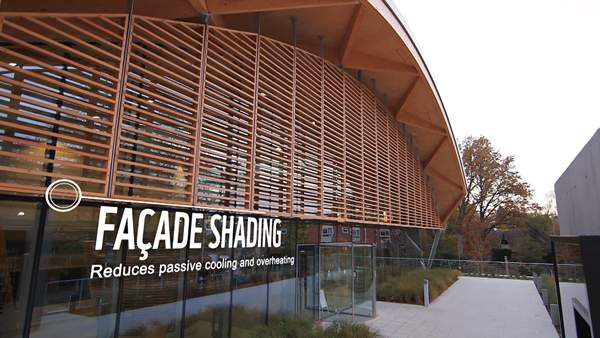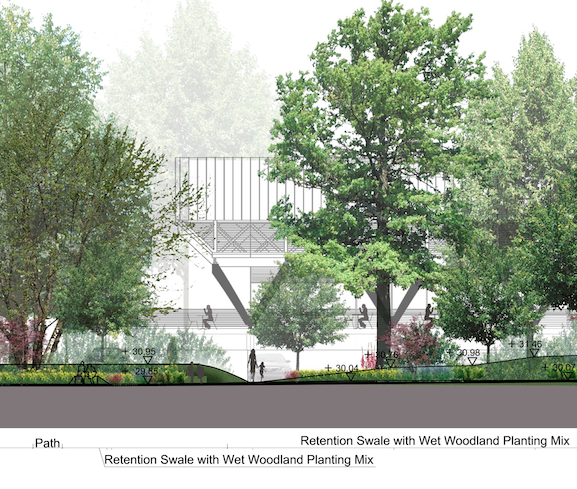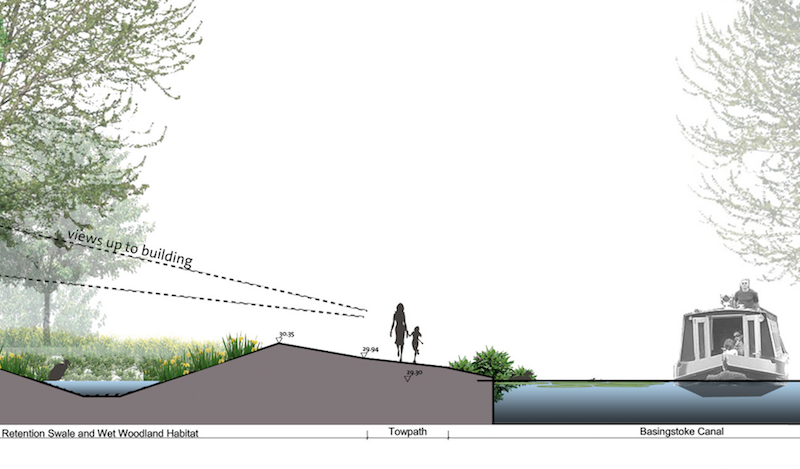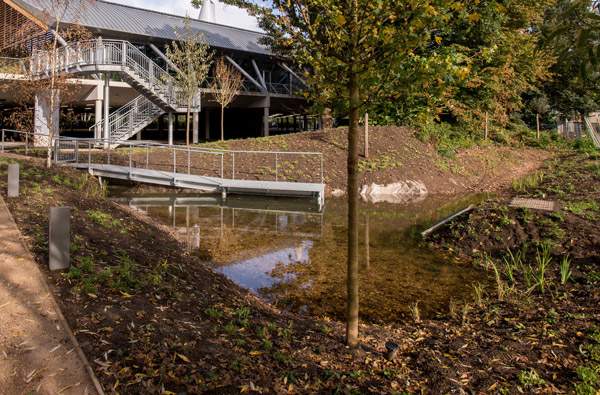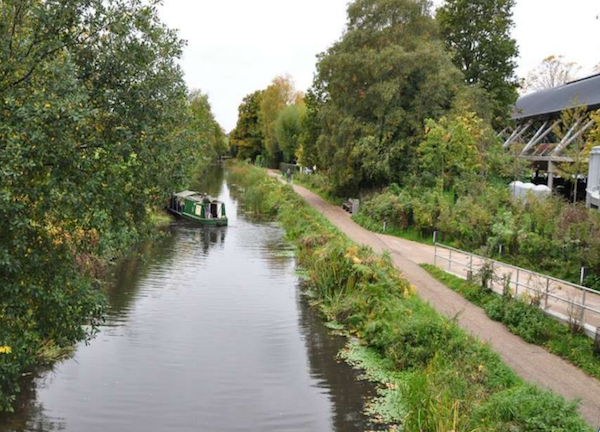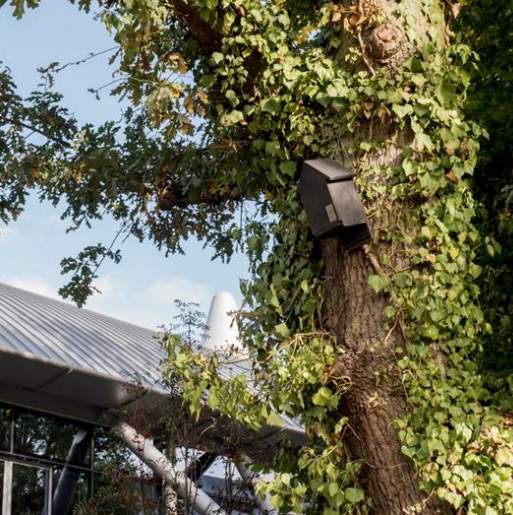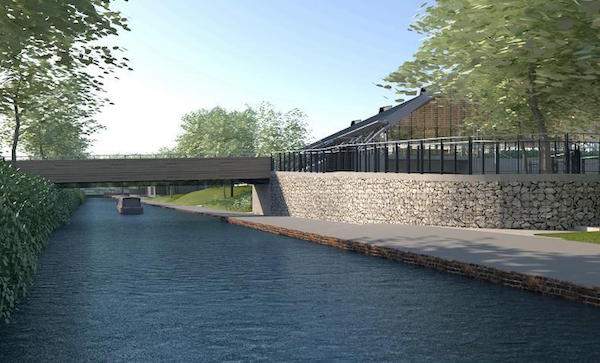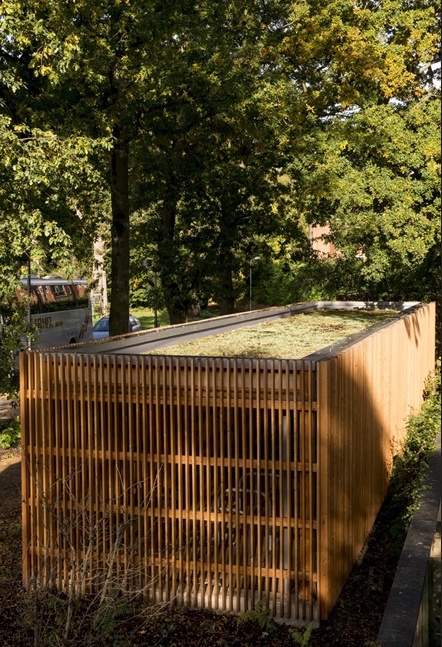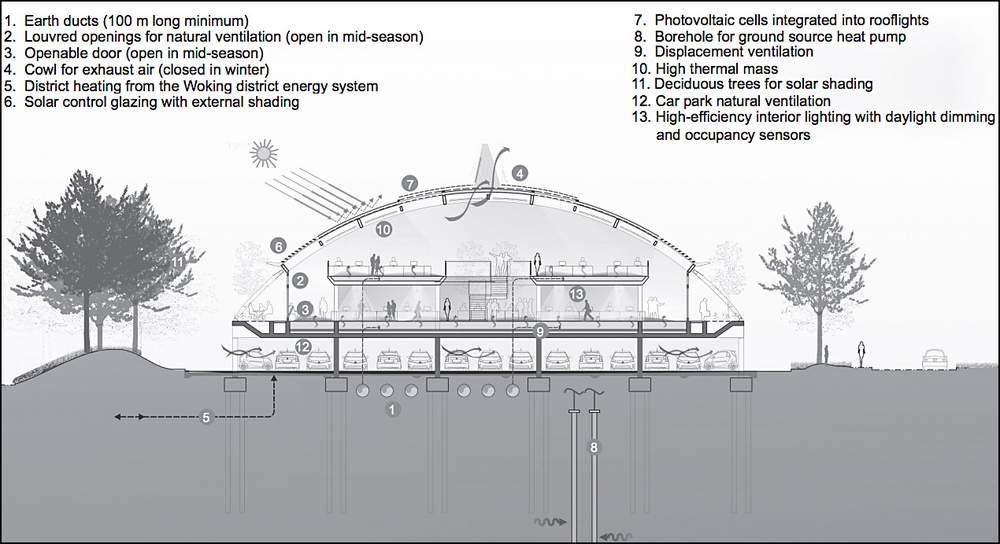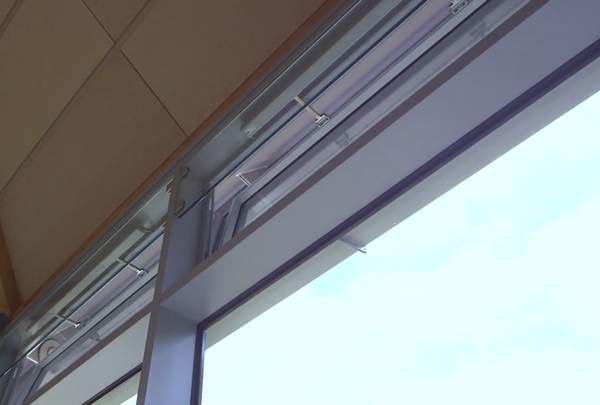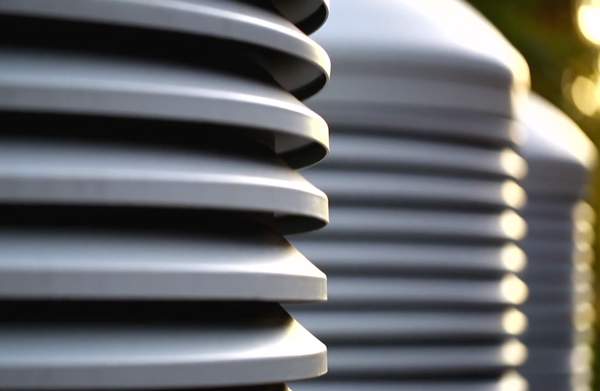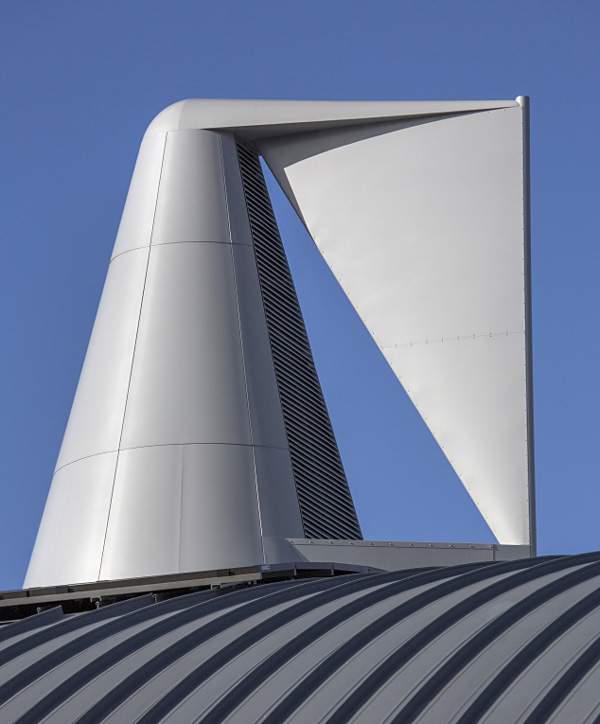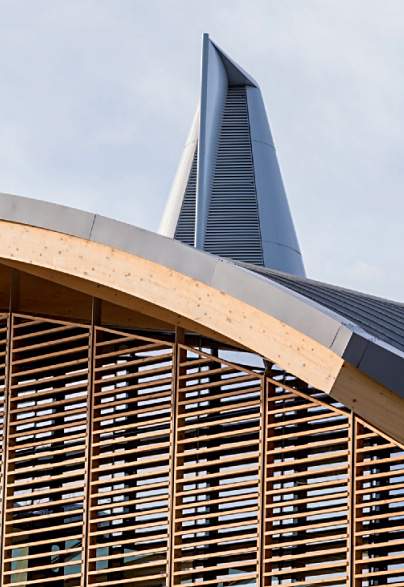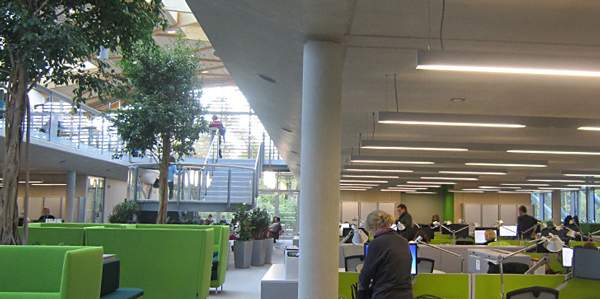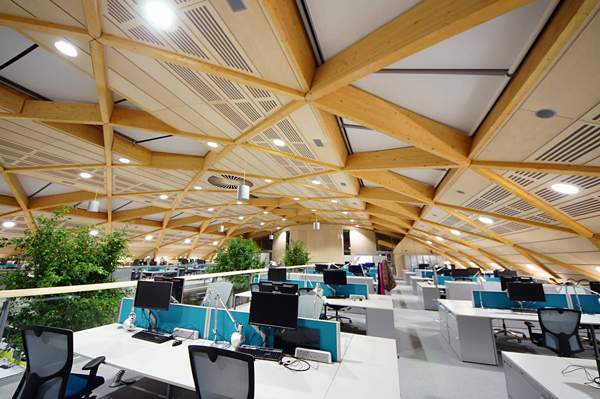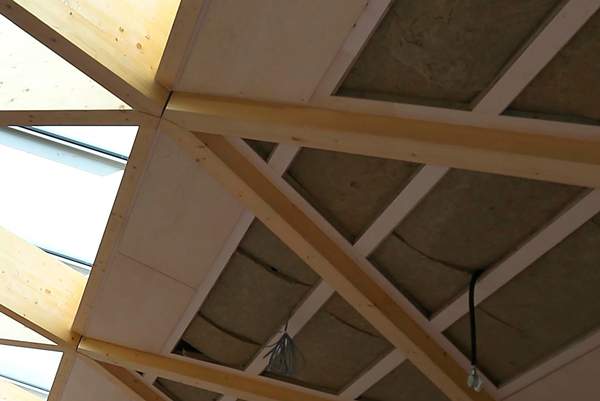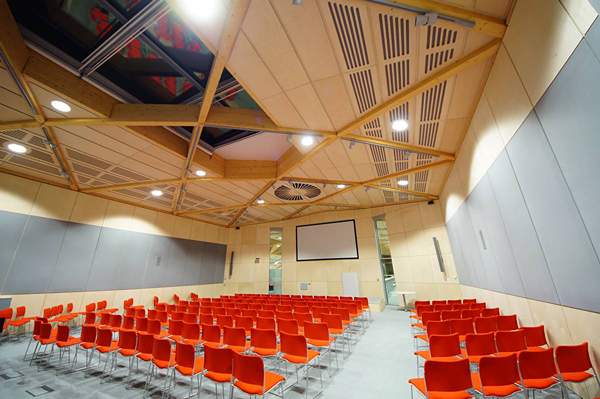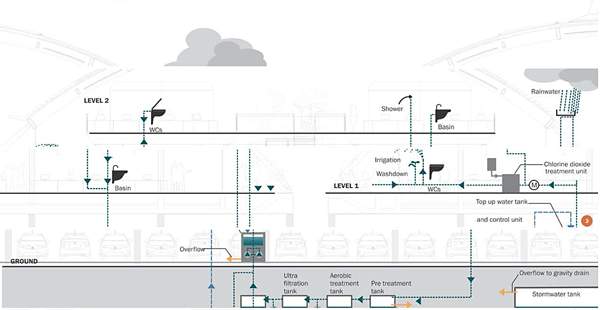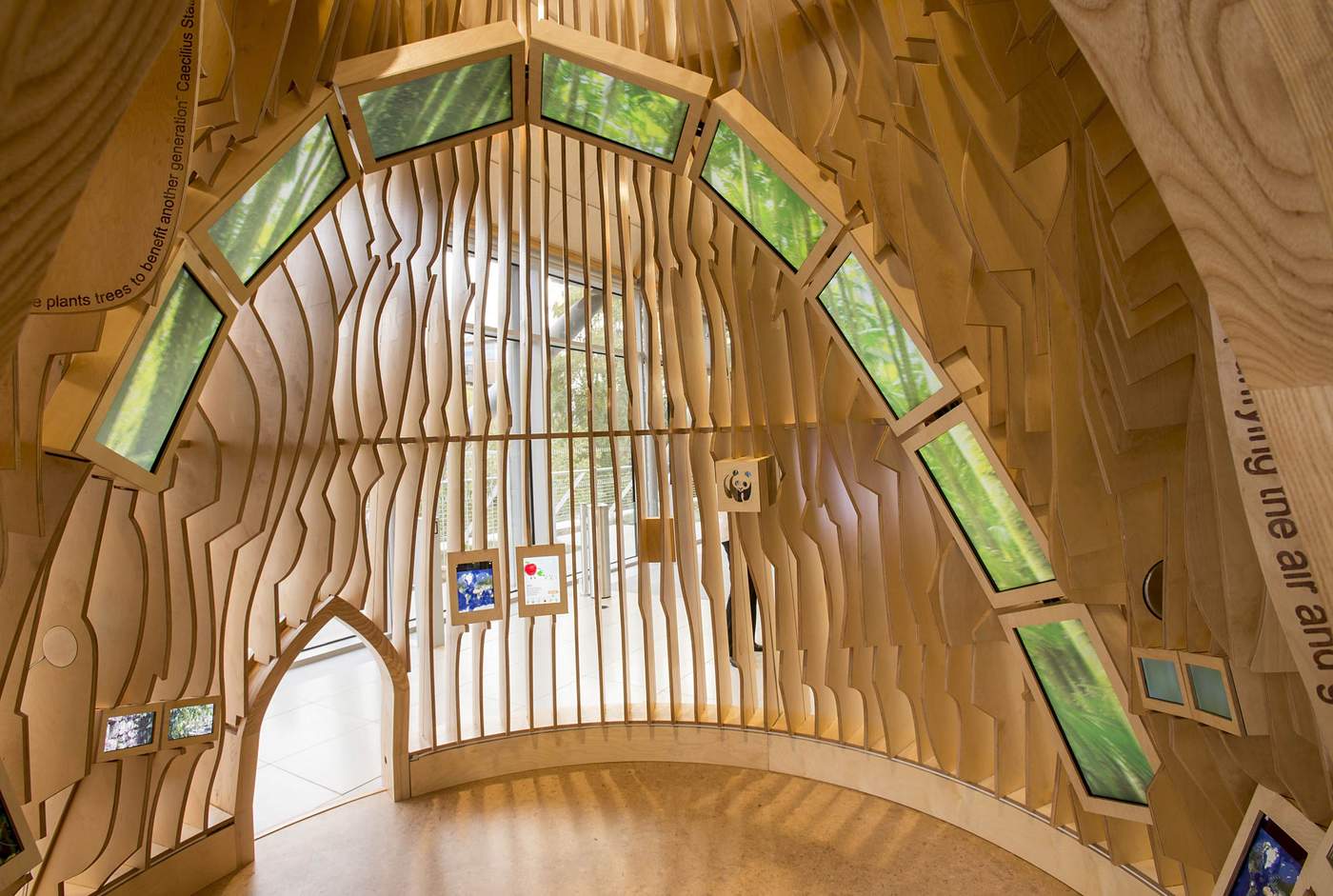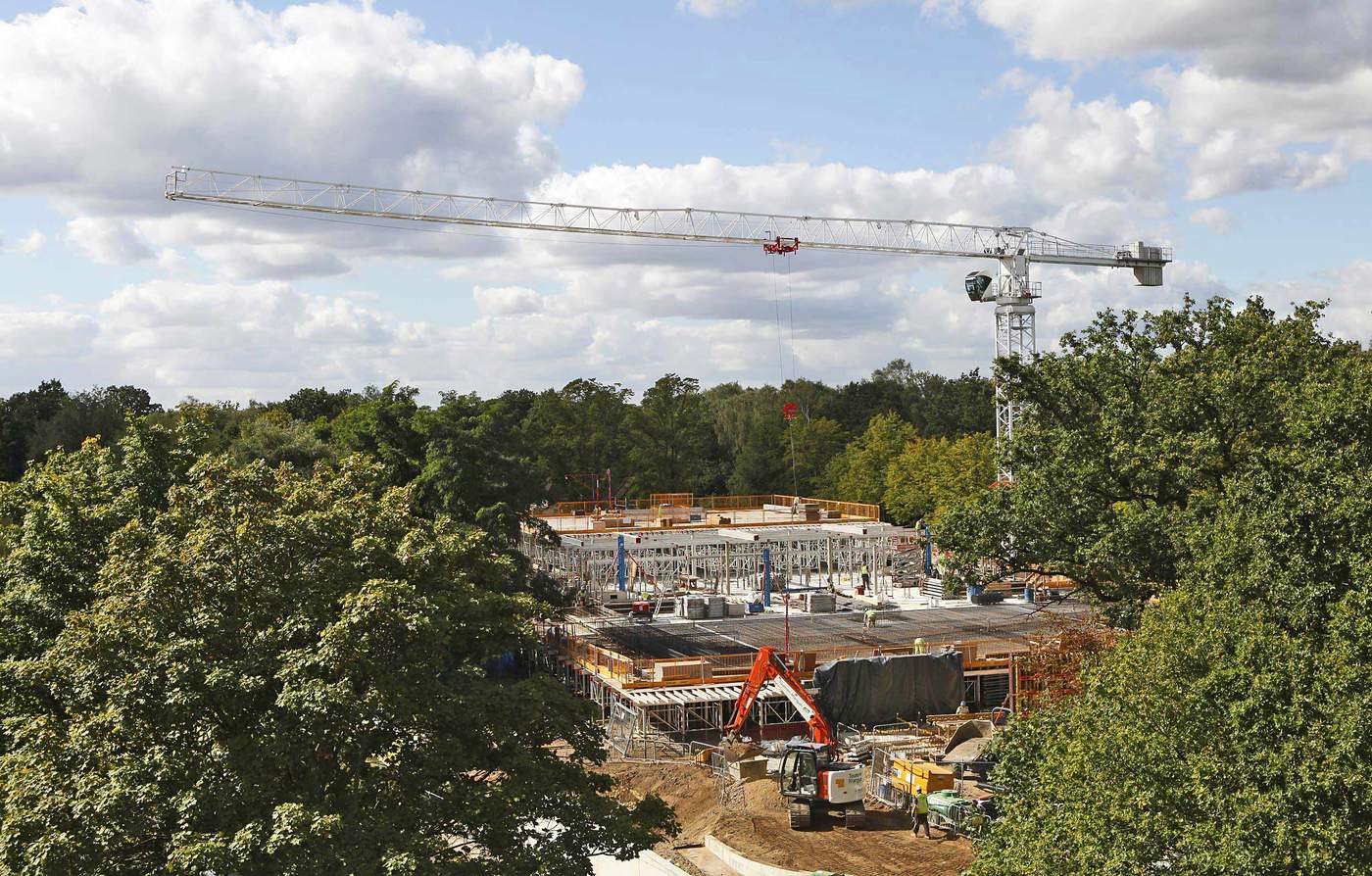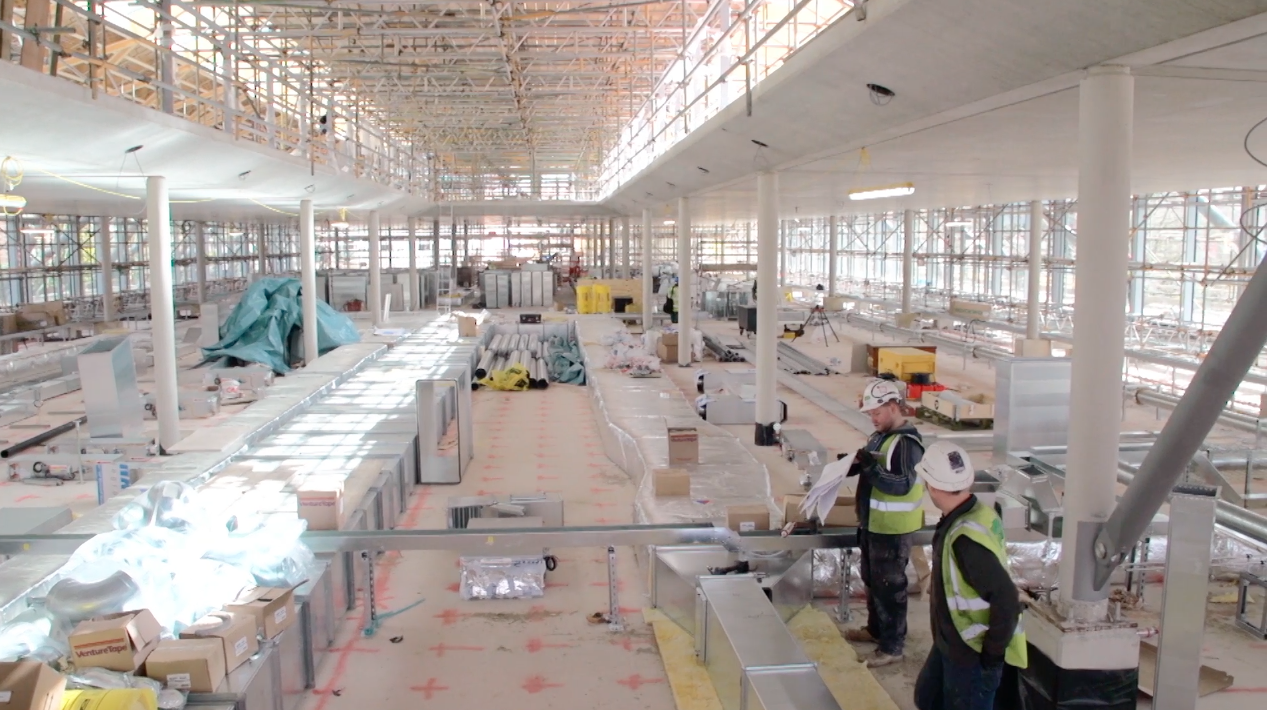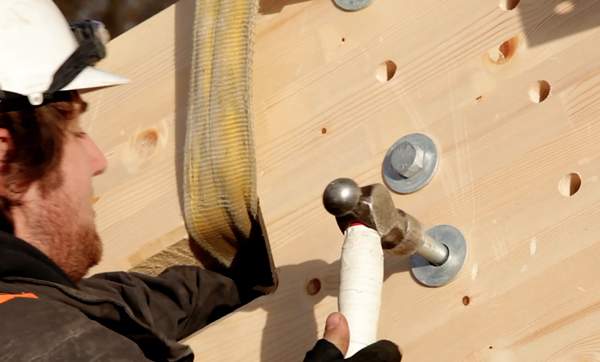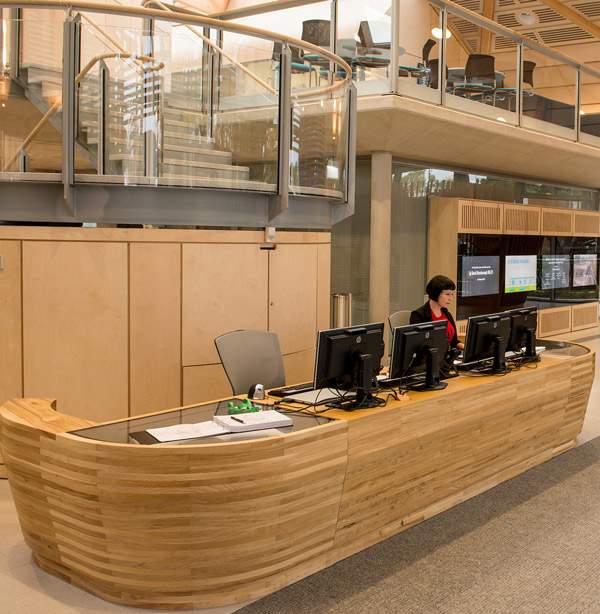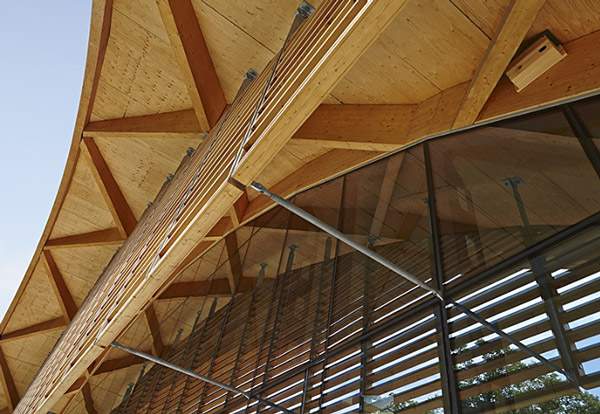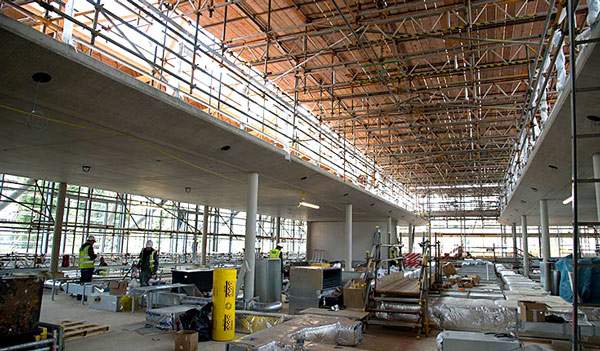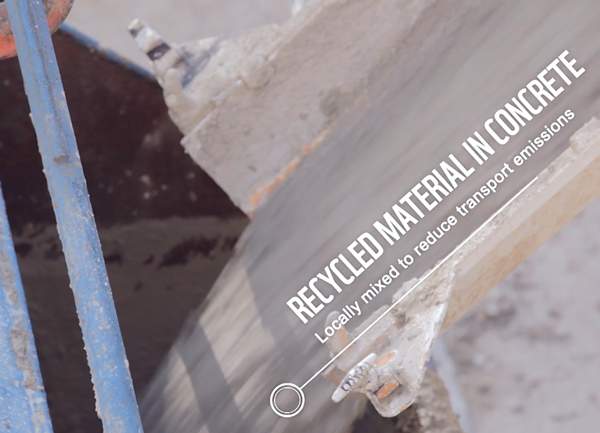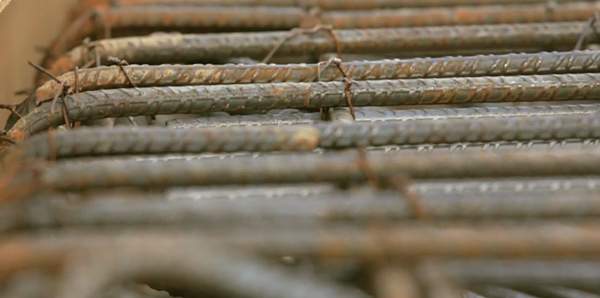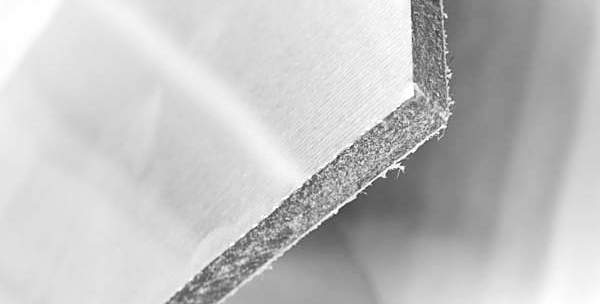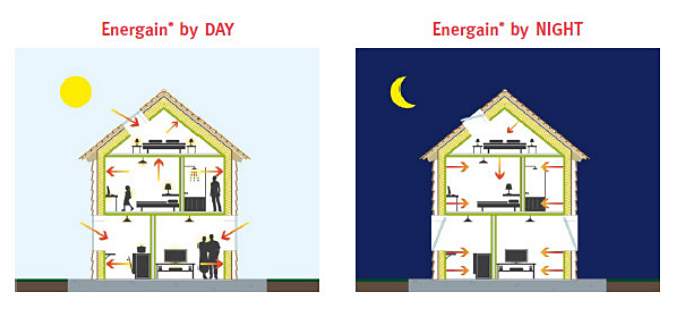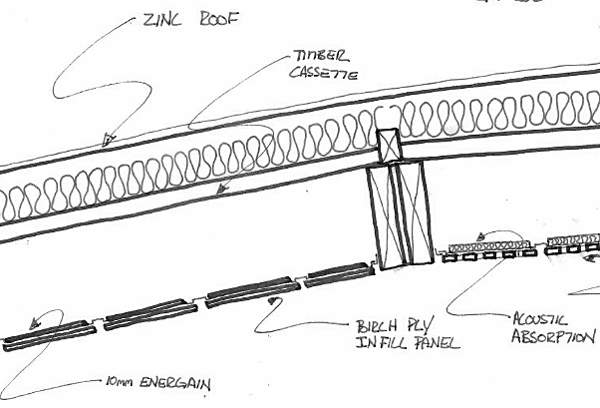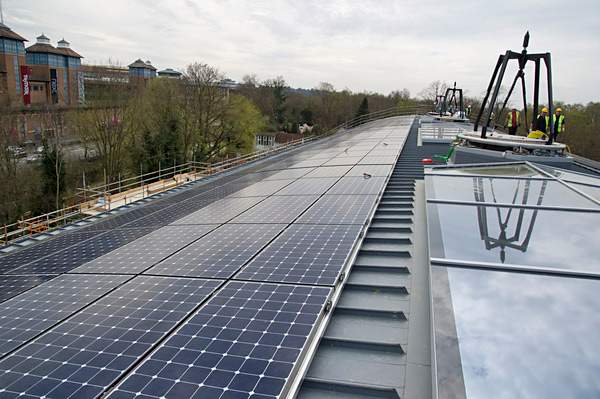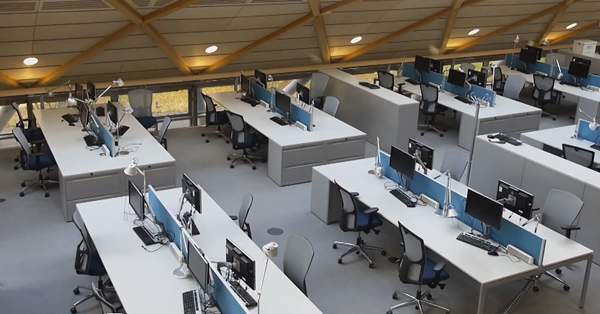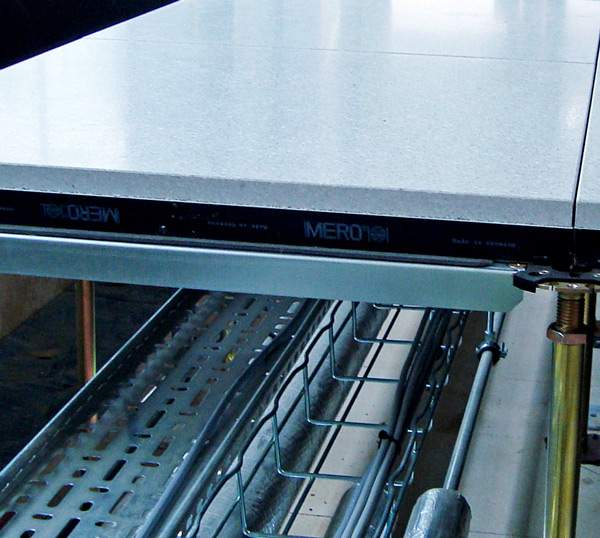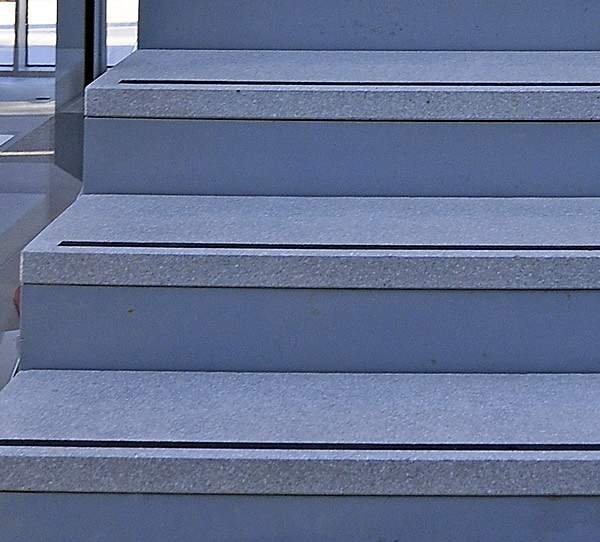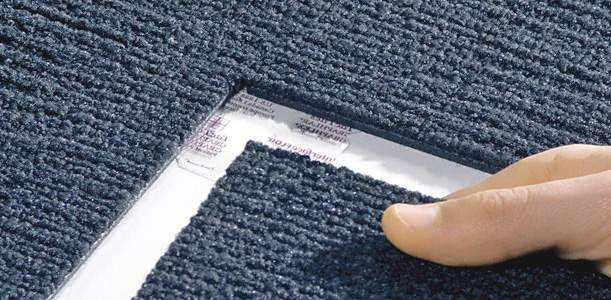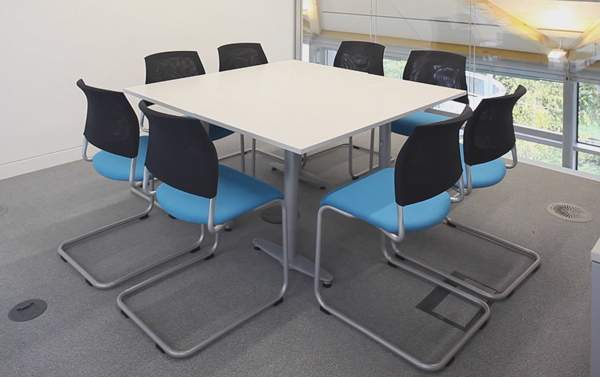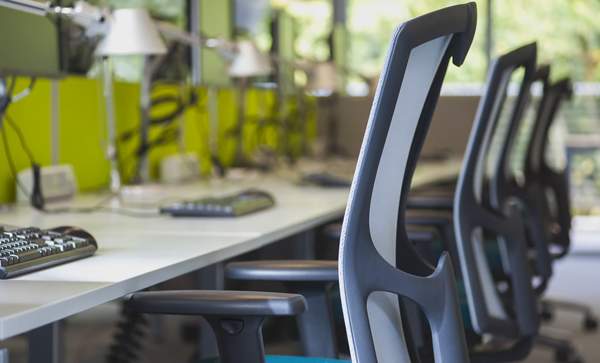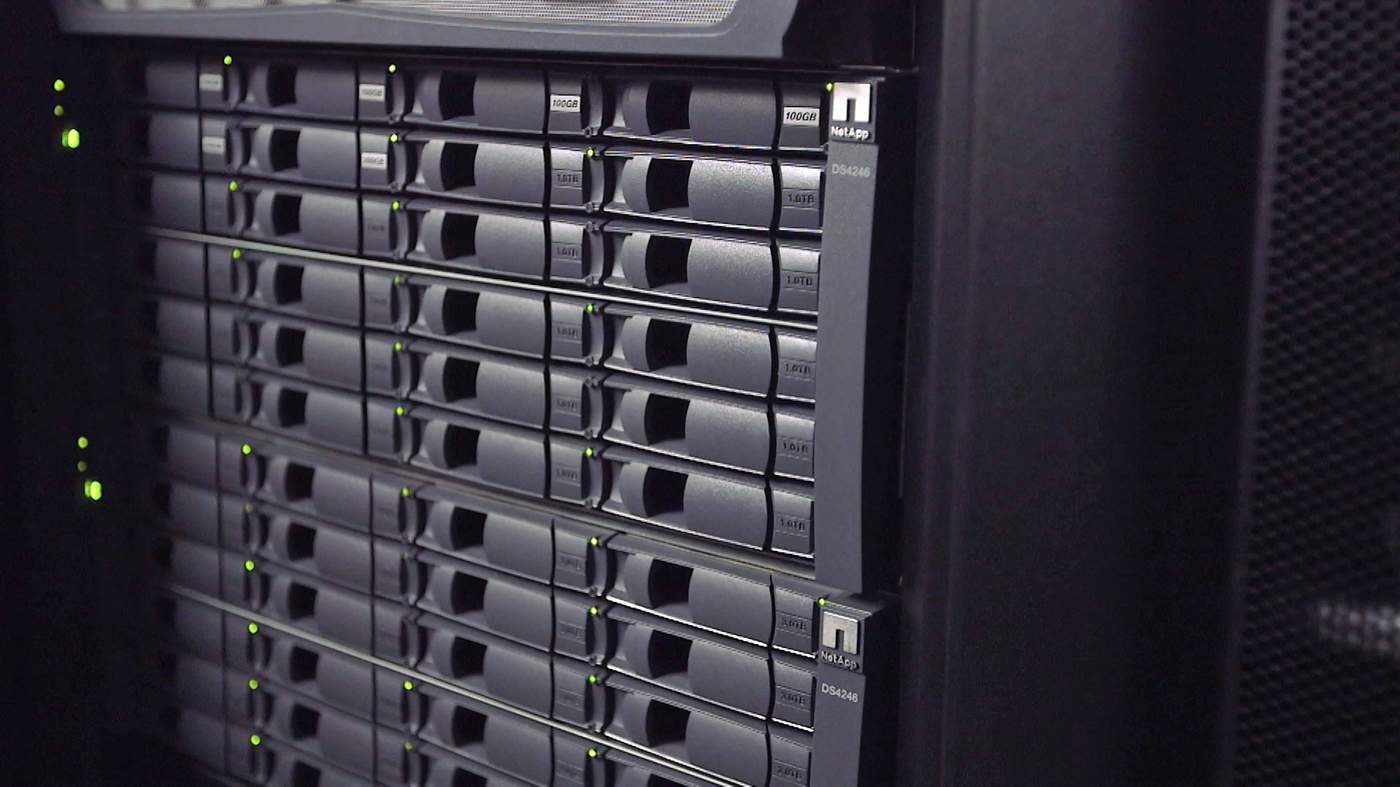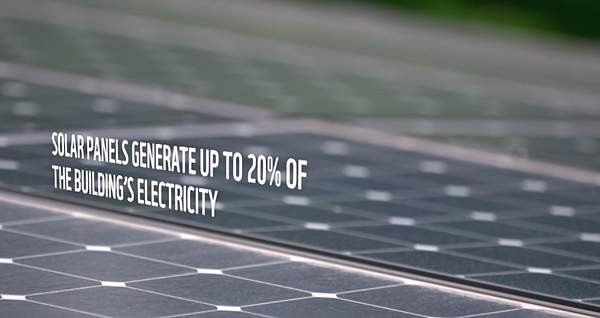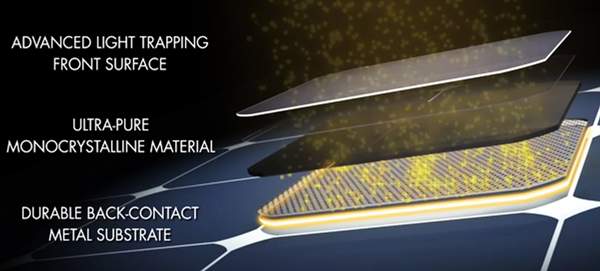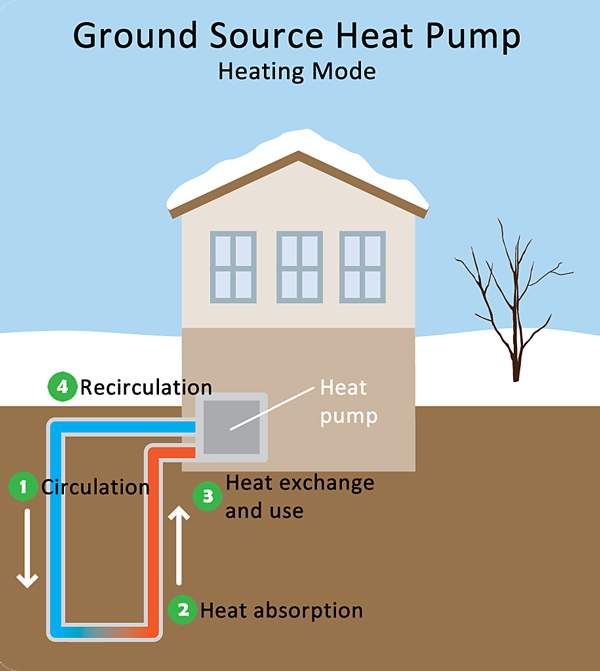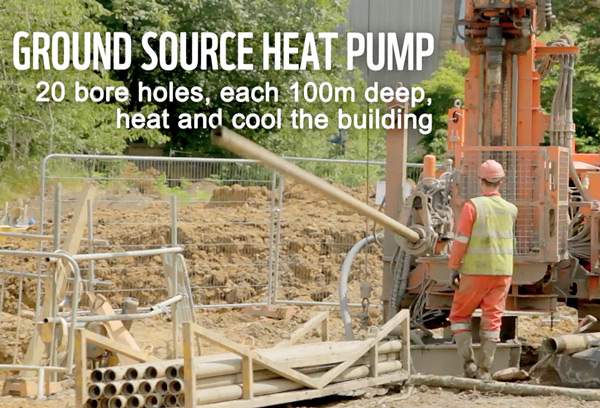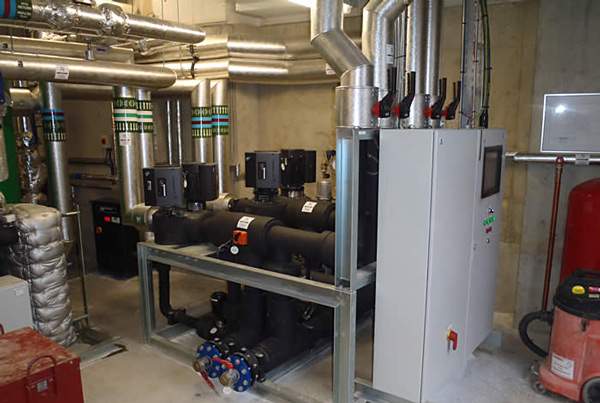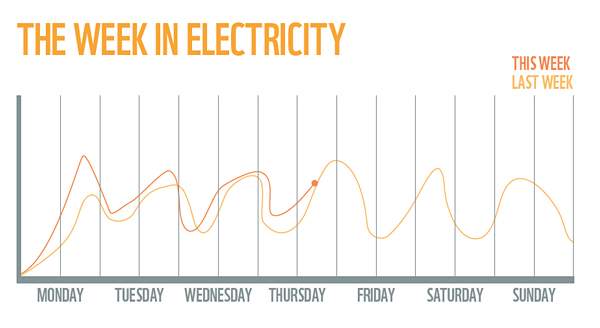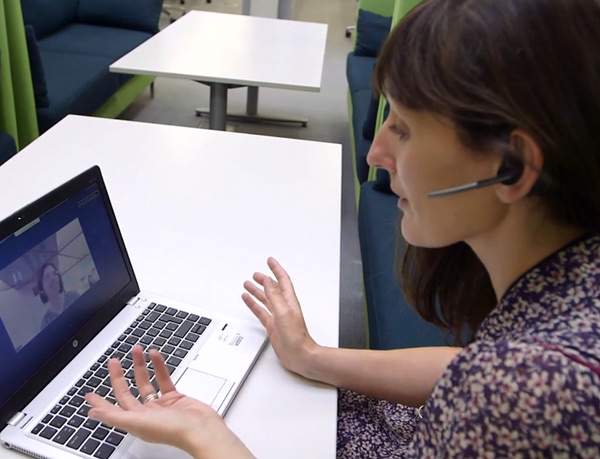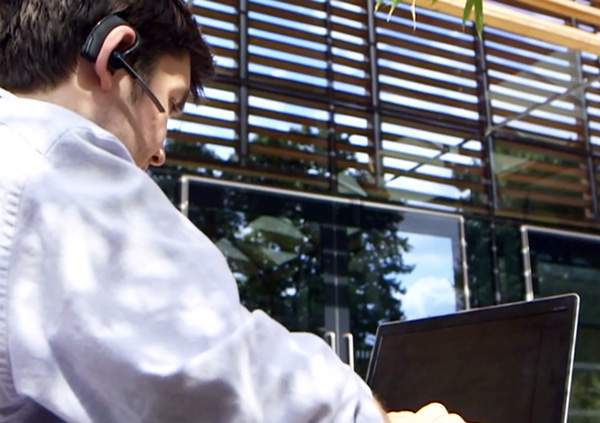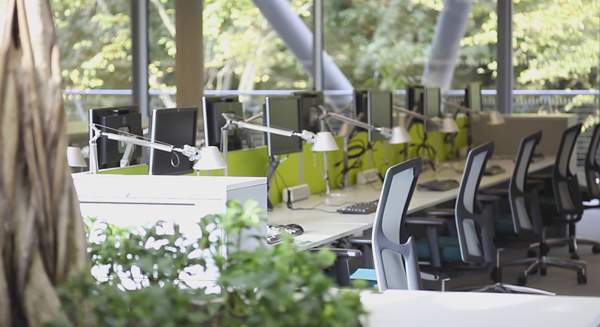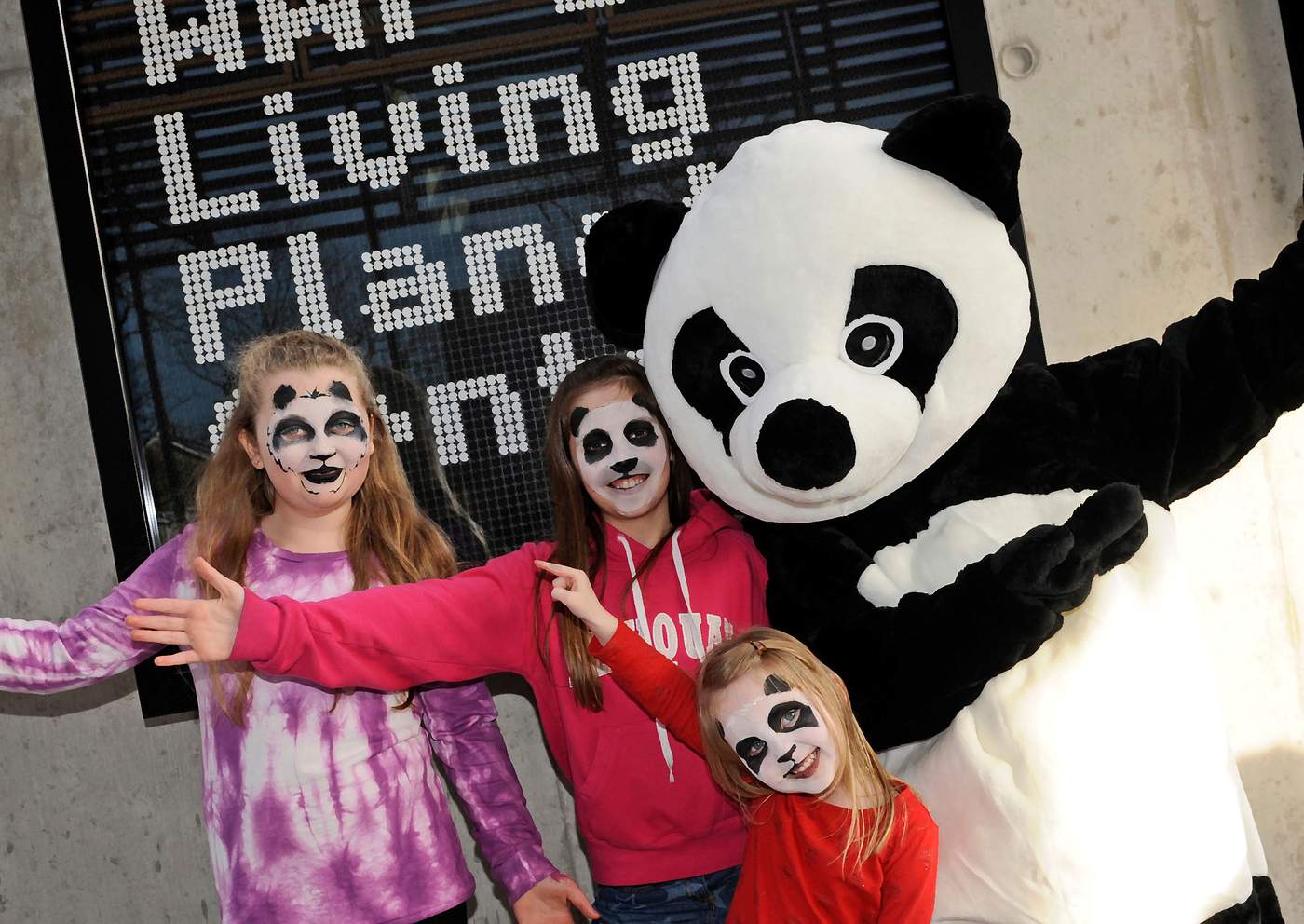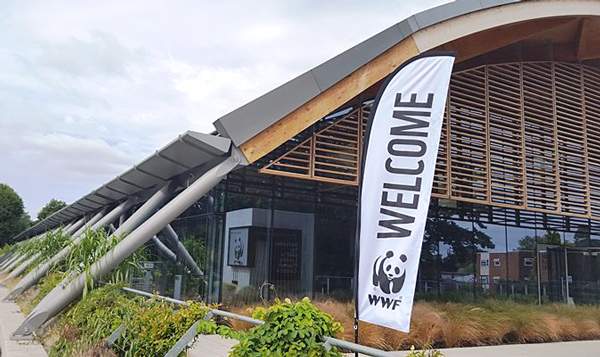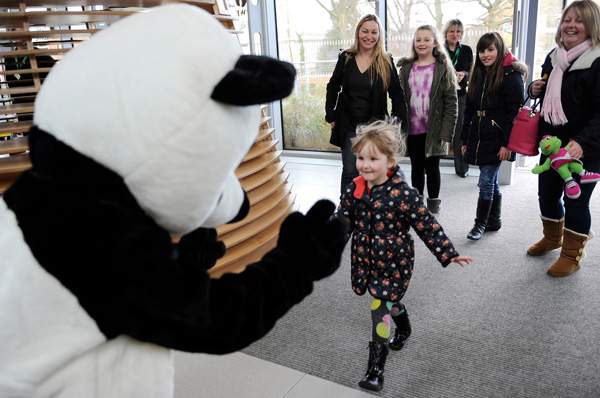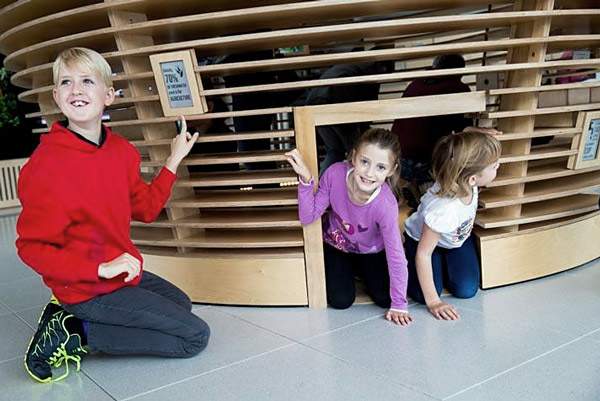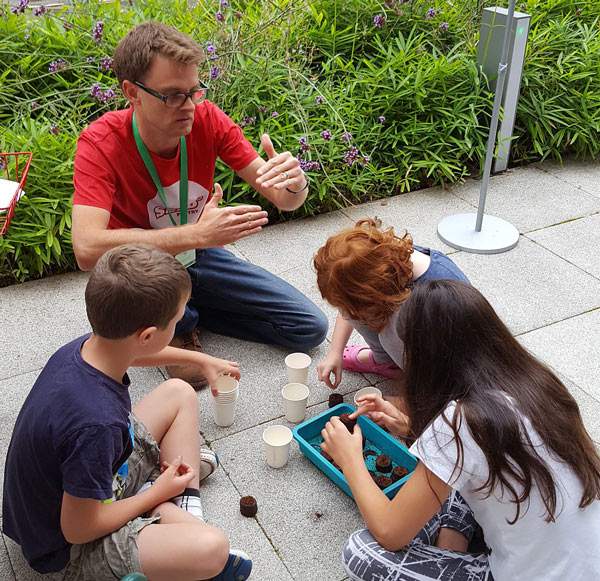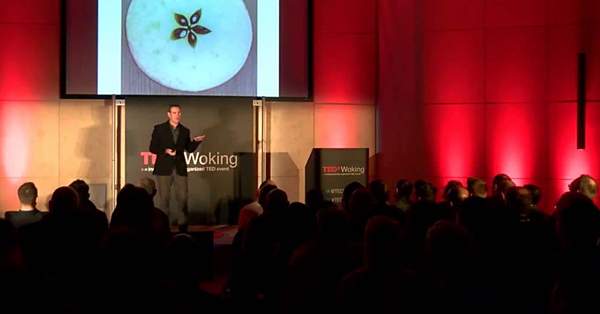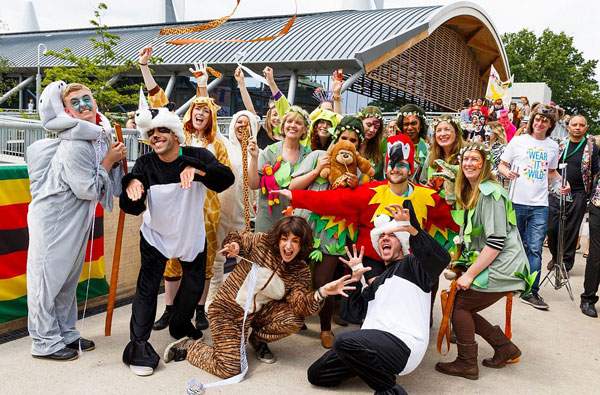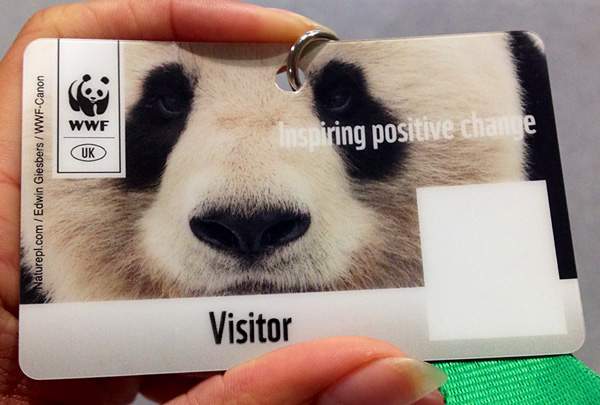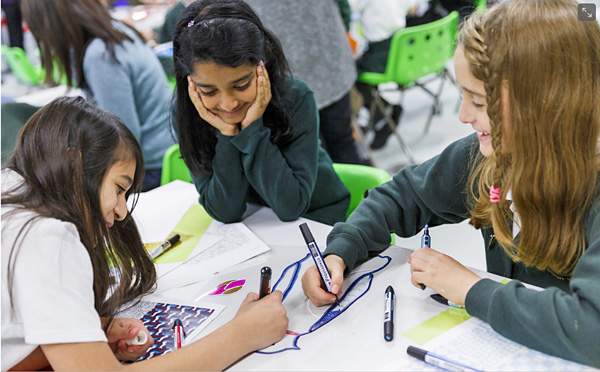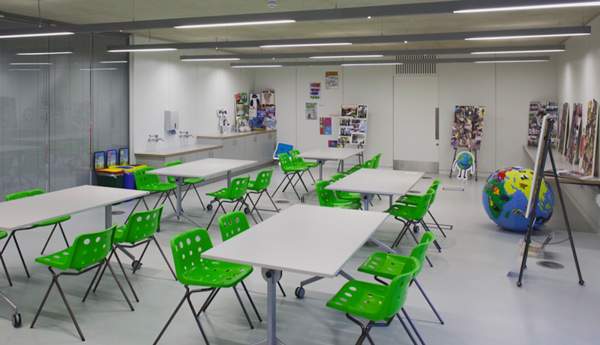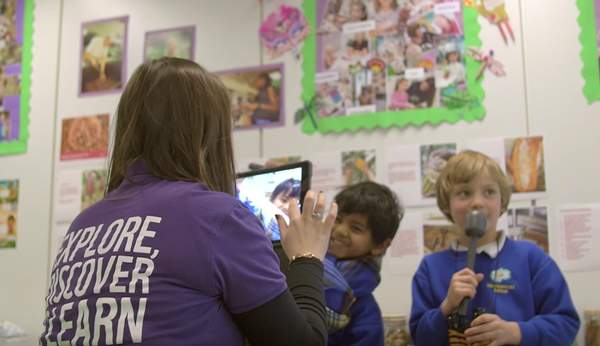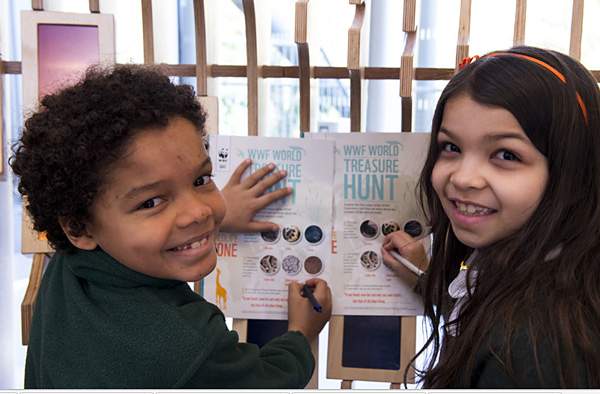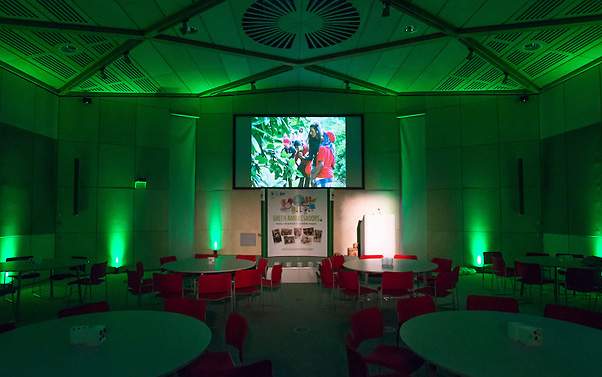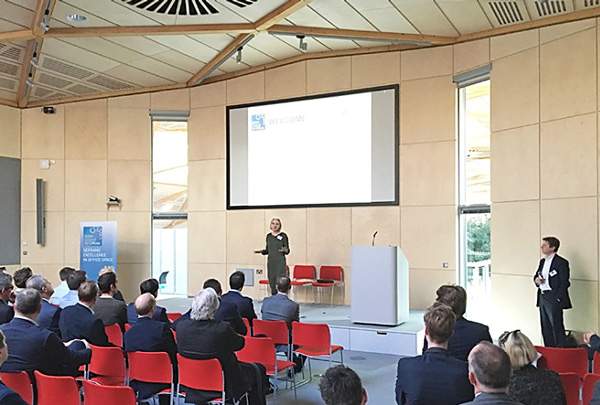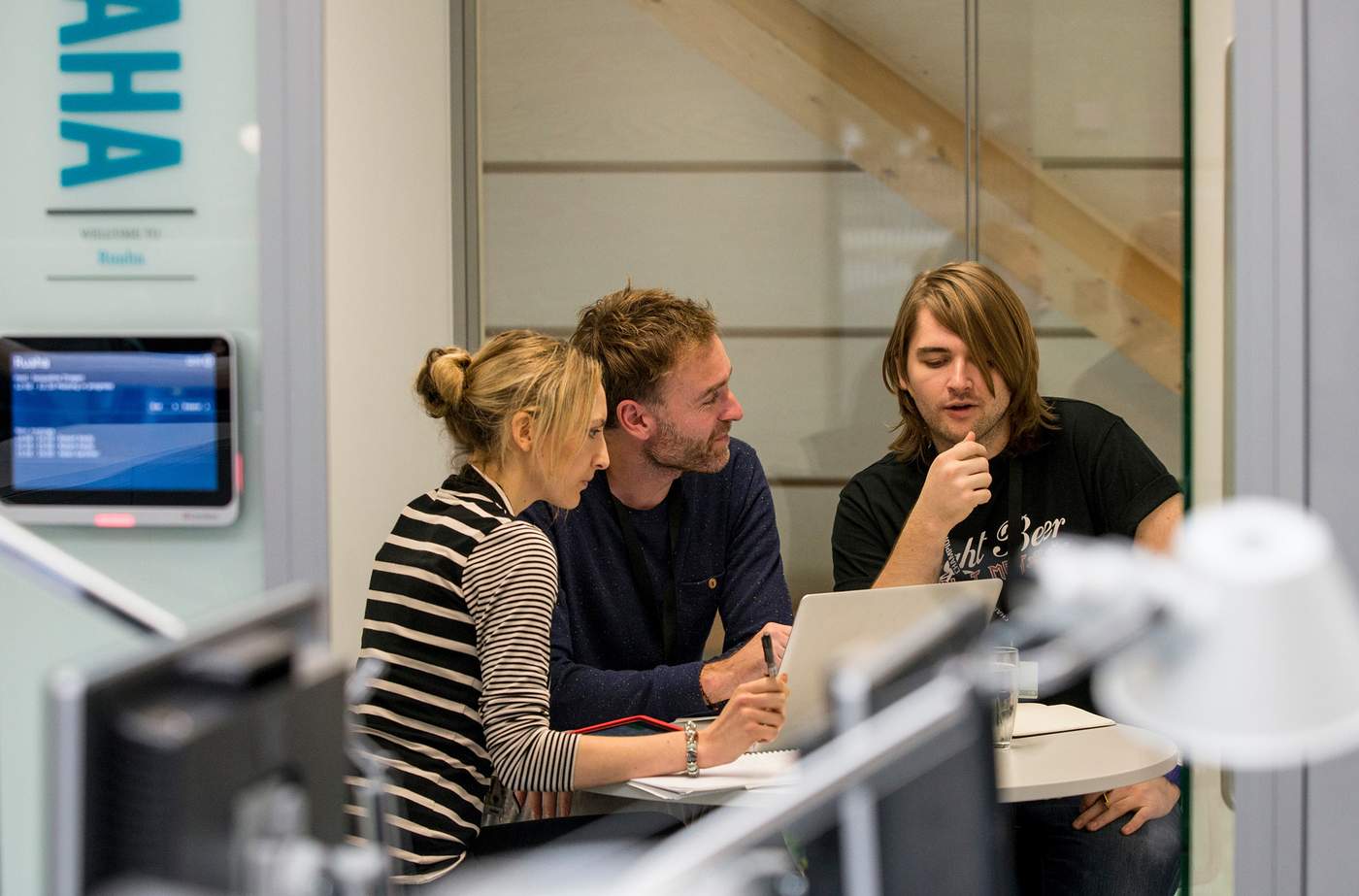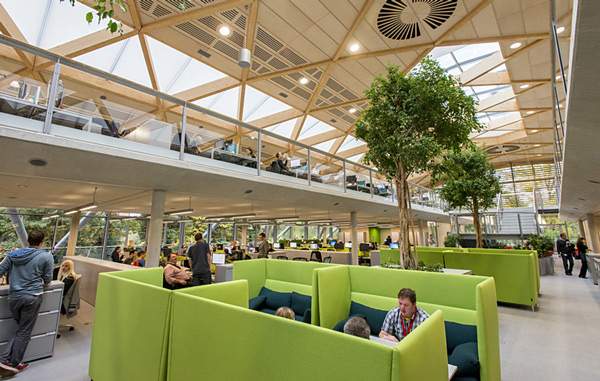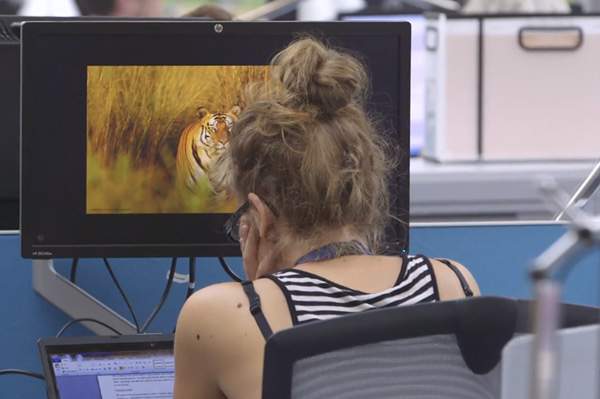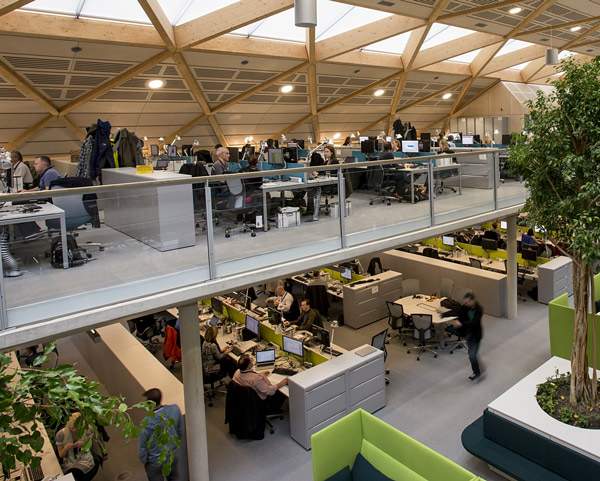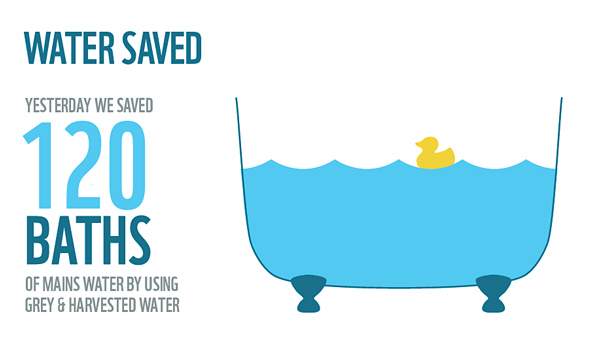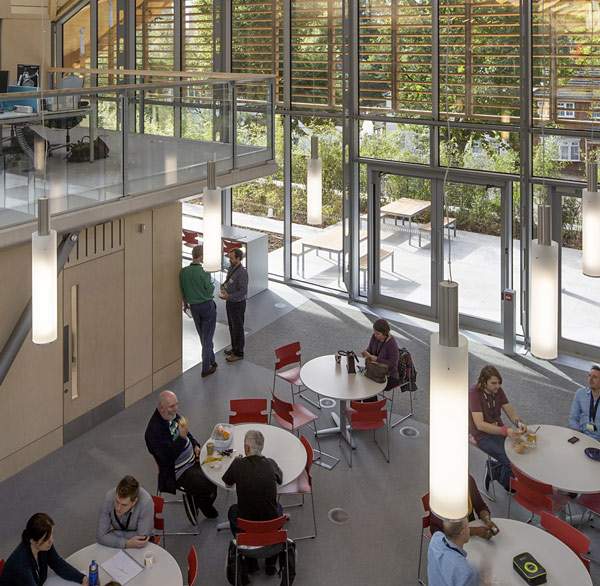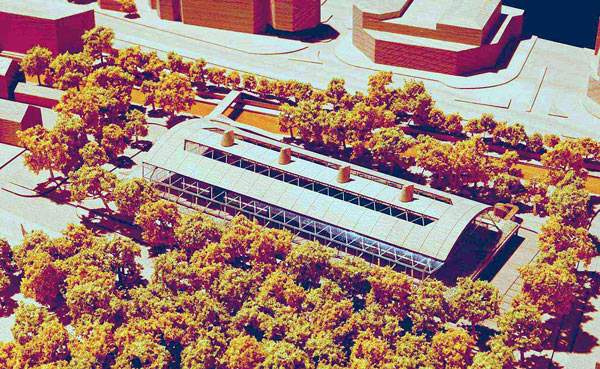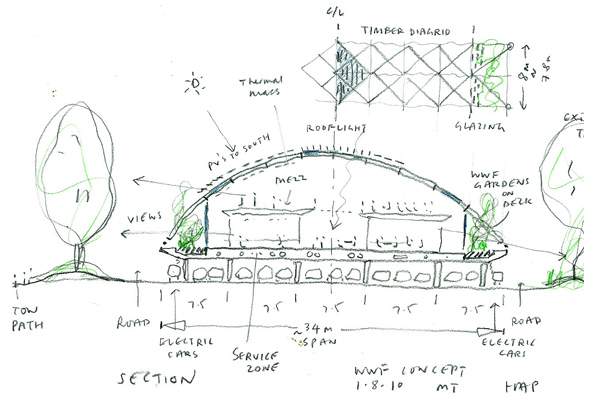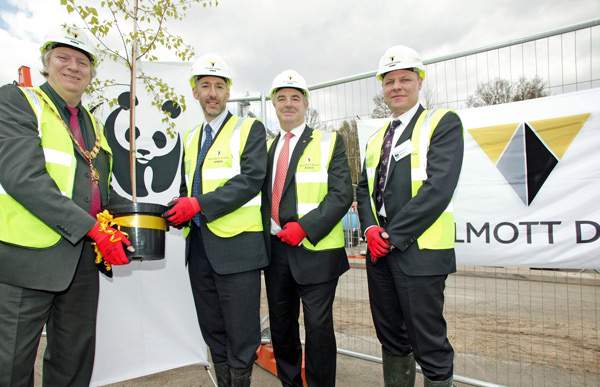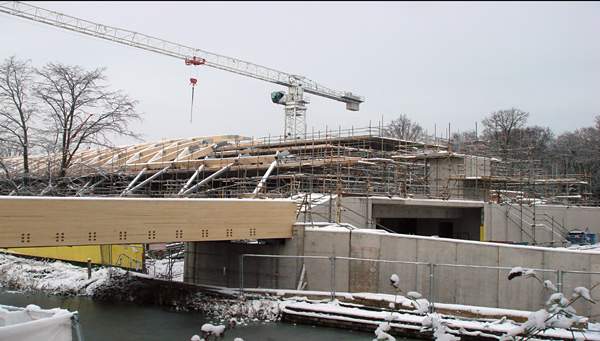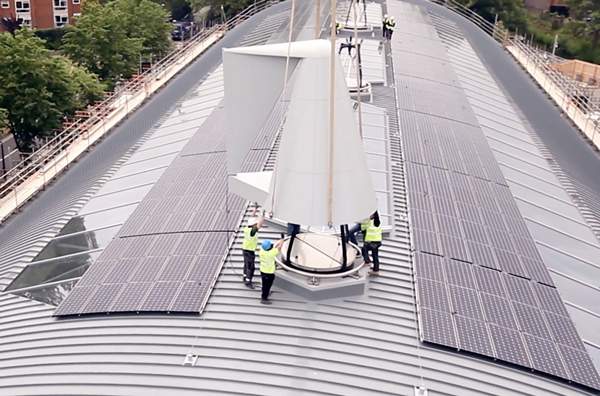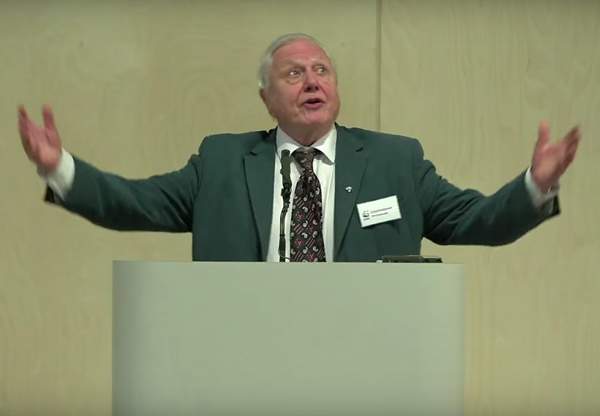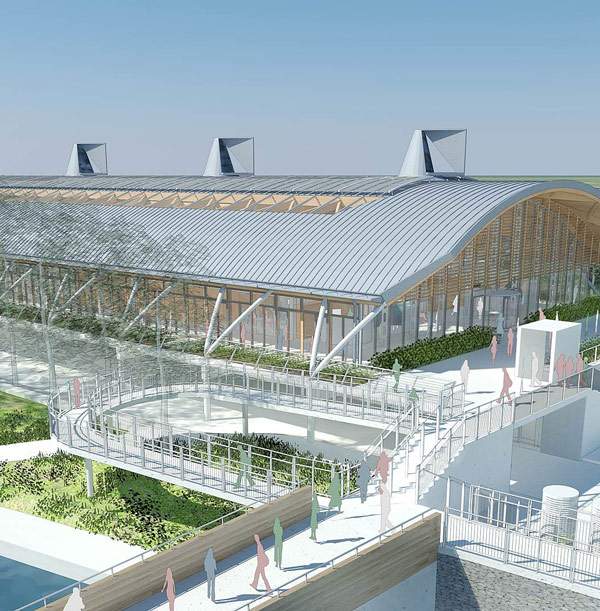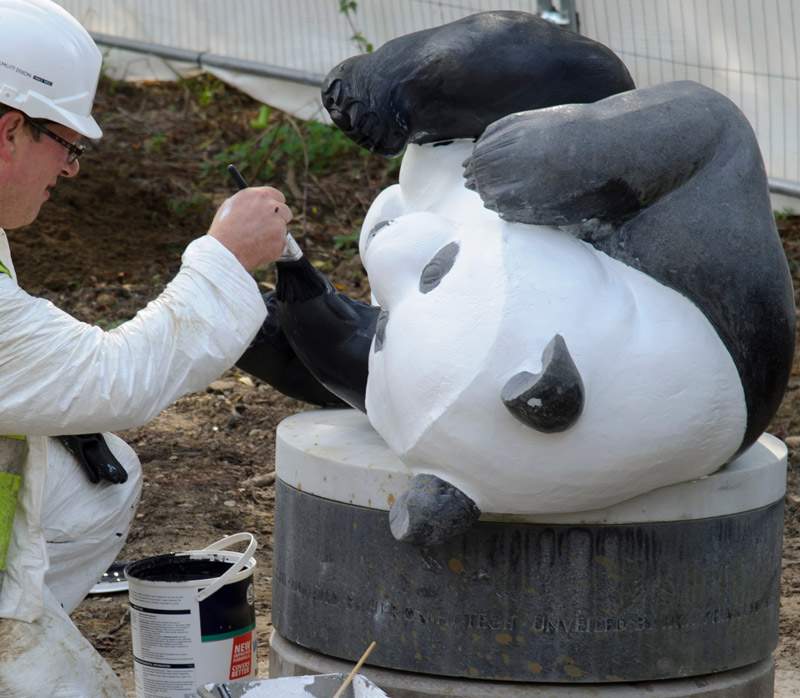HOW MUCH...
The other big consideration, of course, was cost. How much would this ideal green building cost us to construct? We already had a £5m gift from the Rufford Foundation, but we also knew we may need to raise more.
We believed from the beginning that there was a strong business case for this new building, as well as the advantages it would bring in terms of energy-efficiency and its other green credentials. We knew it would add value to our work and our organisation – and ultimately help us achieve our environmental aims.
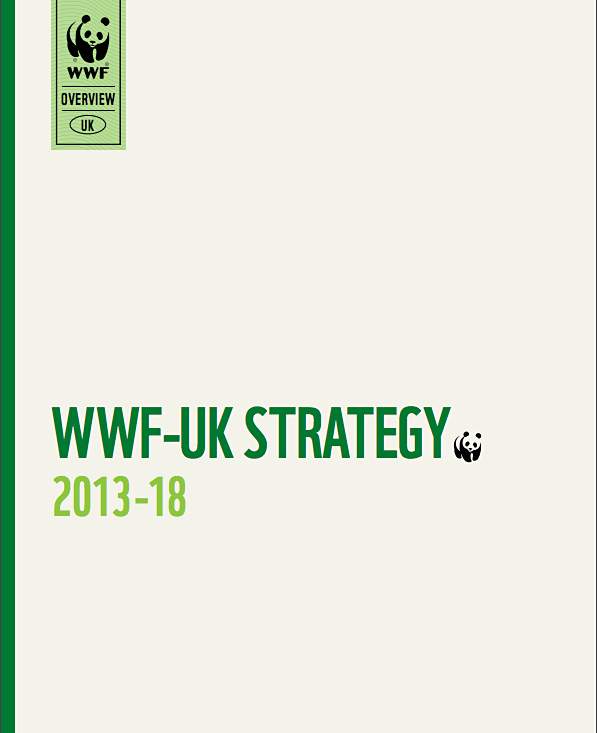
See WWF-UK's strategic plan, 2013-2018, which included an outline of plans for a new green WWF building
As a charity we have to justify every pound we spend. And WWF-UK’s donors rightly expect their money to be spent on protecting vulnerable species and environments around the world.
So we needed to be sure that:
a) we wouldn’t be diverting funds from our vital conservation projects – which are, after all, the whole reason WWF was set up and people donate to us. We knew the costs of any new building would have to be covered from separately-sourced funds. And…
b) we could demonstrate the value in both environmental and financial terms.
Balancing costs against ideals is always a challenge, especially for an environmentally-focused charity like WWF.
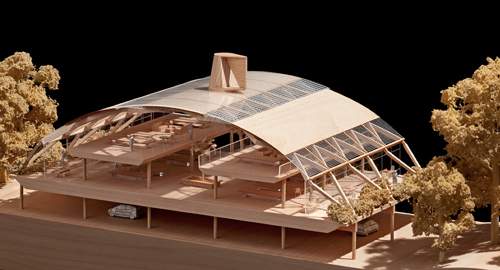
Section of Hopkins Architects' original wooden model of the proposed Living Planet Centre
The choice of the brownfield car park site in Woking was partly cost-driven. The contract we agreed with Woking Borough Council was for a 999-year lease on the site, on which they’re charging no rent for 20 years and then a ‘peppercorn’ rent of just £1,000 per year.
The council retains the ownership of and income from the public car park underneath our building.
The timing of the construction, which coincided with an economic downturn, was also a factor in helping to keep costs to a minimum.
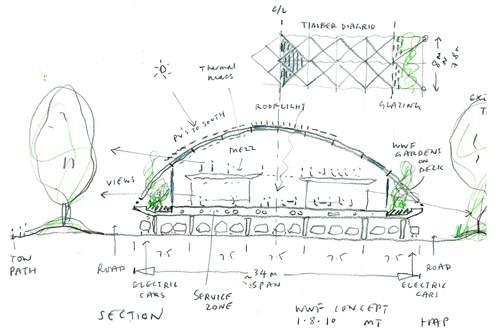
Early concept sketch by Hopkins Architects – August 2010
Another early decision was about the size of our new building (which we'd decided to call the Living Planet Centre). We thought carefully about balancing how much space we’d need to accommodate 300 WWF colleagues and a large number of visitors, alongside minimising environmental impact and costs.

By having our own in-house facilities, including an auditorium and education suite, we could invite people to come to us, rather than paying for travel or external venue hire.
Keeping the costs as low as possible was going to be a challenge given our environmental requirements. We can always try to improve on things like our ongoing energy consumption, but we knew we had one chance to make this the greenest building possible right from the construction stage – and that’s what we were determined to do.
We wanted this to be a showcase – an ‘exemplar’ green building for the UK and the world. We wanted to make a statement that sometimes it is worth spending a bit more than the bare minimum to create something that’s not only sustainable and environmentally sound, but also inspirational.
“Affordability is often cited as a key barrier to investment in sustainable buildings. By developing a truly exemplar building on a budget, WWF will inspire and influence the construction industry and policy makers alike.”

Early sketched idea of the building plan from Hopkins Architects (we're not sure what happened to the huge panda in the middle!)
We were demanding and single-minded with our designers and builders: we wanted them to deliver the most sustainable, green building that was technically possibly within our budget. And, despite some challenges and unavoidable minor changes, that’s what we achieved.
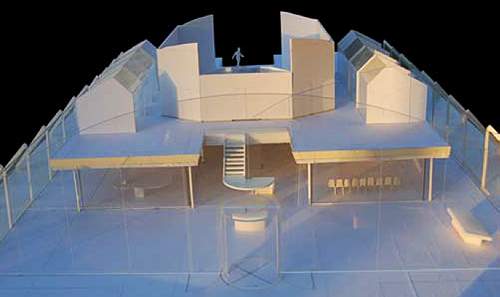
Early model of inside front of new building
In terms of predicting total costs, we calculated that creating our new green building from scratch could be as much as £20 million (including relocation costs and other expenses). Not as much as some other, less efficiently-built offices, perhaps, but obviously a lot of money.
Breakdown of Living Planet Centre costs:
Construction £14.3m
Fees £2.5m
Fixtures and fittings £1.3m
Interest and VAT £2.1m
Total £20.2m
So we had to build on the pledged £5 million from the Rufford Foundation by launching a targeted ‘capital appeal’ with the aim of raising at least £10 million.
In the end, after a huge amount of work and some wonderful acts of generosity, we managed to raise over £16.5 million from donors, charitable trusts and specific legacies – as well as gifts in kind and discounts on various materials and services.
The balance came from our own reserves. Crucially, we didn’t divert any money from WWF-UK’s core conservation work to fund the building.
At the end of 2011 we selected contractors Willmott Dixon as our main construction partner to bring the architects’ plans to life.
It was all systems go for our new Living Planet Centre!
PLANNING...
Having identified the ideal site, one of the first challenges for the project team was the fact that Woking Borough Council’s planning consent said we had to keep the existing public car park.
If you’re thinking that a large car park sounds at odds with a ‘green’ building – we'd agree. We deliberated over that too. But we also knew this was too good a location to lose.

View from ground level at the rear of the building
We’re often asked about this, and have to point out that the car park below the building is owned and operated by Woking council, and isn’t for WWF use (except for access to four disabled bays if needed by visitors to the building).
It was quite tempting to try and put the car park underground, completely out of sight, but the extra excavation work, materials and waste disposal involved made that option unacceptable for us.
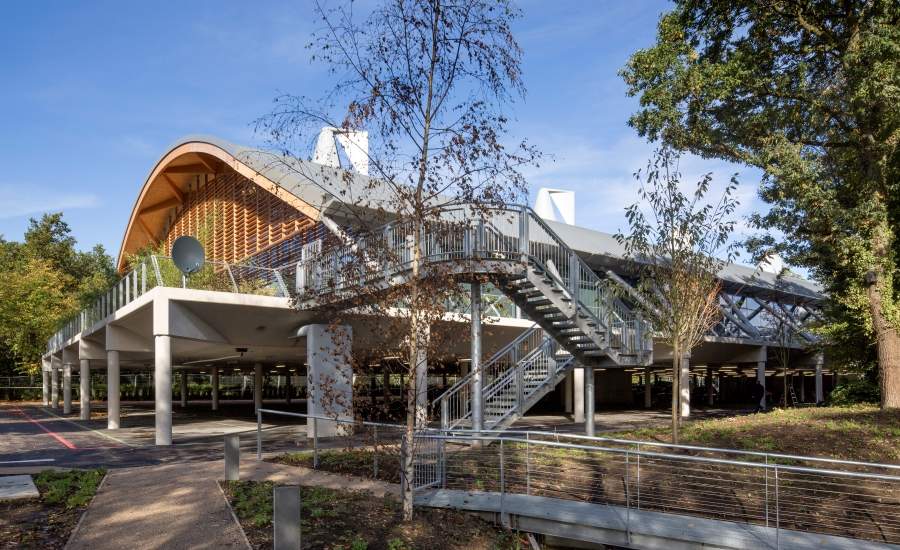
View from ground level at the rear of the building
So the architects embraced the challenge and designed a spectacular building elevated on stilts (but with the roof still below the tree line), and the car park neatly tucked away underneath – technically still at ground level, but the careful design makes it seem lower.
Hopkins presented us with a few different design concepts for the building, inside and out, taking onboard some of our own suggestions. For instance we were keen on the idea of being able to see the whole workspace from the stairway (something we also noticed in Hopkins’ own office!).

Hopkins Architects' own open-plan London office
The plan we eventually agreed on was for a long, low, two-storey building, roughly 90m x 40m in area (about the groundspace of a football pitch). A large curved roof, sitting on a raised concrete podium, surrounded by trees, shrubs and grasses, complete with a small wetland/pond area.
Inside there would be a public-focused ‘Visitor Experience’ exhibition space, an education facility and a 150-seat auditorium, as well as open-plan working spaces for up to 300 people, with quiet rooms and meeting areas.
Computer-generated 'fly-through' graphic of the planned Living Planet Centre
B) INterior DESIGN...

Original computer graphic image showing the view from the reception area
The first things most people notice when they go inside the Living Planet Centre (especially if they knew the slightly gloomy restrictiveness of the old Panda House office) are the space, the light and the natural wood.
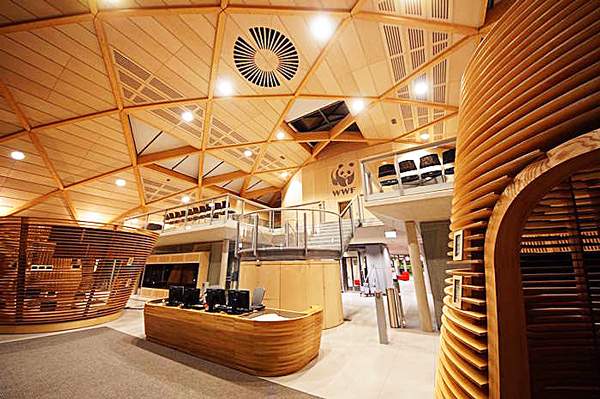
Our public reception area (after sundown, with roof blinds closed and lights on)
The wood emphasis is even more noticeable inside than outside the building. A reviewer from the Architects Journal said walking into the “light-filled arched interior” of the Living Planet Centre was like “stepping into a gigantic treehouse”.
The actual floor area of the building – which is 3,675 square metres, spread over the two storeys – is only about 25% bigger than our previous offices in Godalming. The new public areas account for most of that increase.
But the high ceiling, open-atrium layout, large windows and general airy brightness make it feel so much more spacious than the old Panda House.
The upper ‘mezzanine’ floor is divided across two concrete platforms separated by the central atrium, each side supported on a few slender concrete pillars. The designers referred to the central walkway downstairs as ‘the street’.
THE CEILING
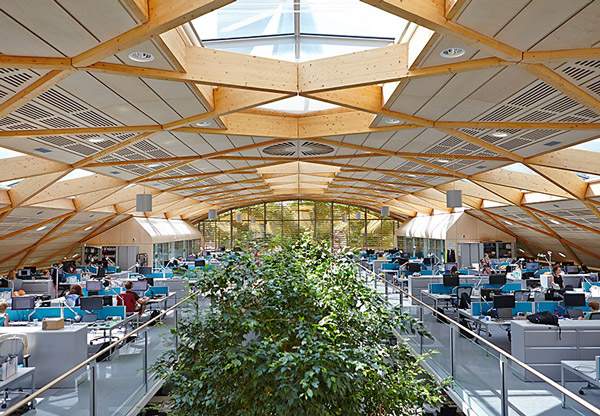
You can’t help gazing up at the stunning barrel-vaulted roof – known as a ‘gridshell’ design because it’s made from a grid of timber beams. In our case it’s dissected by rows of skylights that run the length of the building, letting natural light flood in.
This criss-crossing 'diagrid' design (short for diagonal grid) is a concept based on the inherent strength of triangular structures. (Architect magazine confirms that this technique is influenced by the geodesic domes developed by Richard Buckminster Fuller from the 1940s onwards, and has recently become a “hallmark of 21st-century modernism”.)

The diagrid 'gridshell' roof from above, during construction
> Find out more about the diagrid roof in the Materials section.
The four round, dial-like grills in the ceiling are part of the Living Planet Centre’s natural ventilation system – on hotter days they help unwanted warm or stale air escape from the building when necessary, drawn out through the roof by opening the external wind cowls.
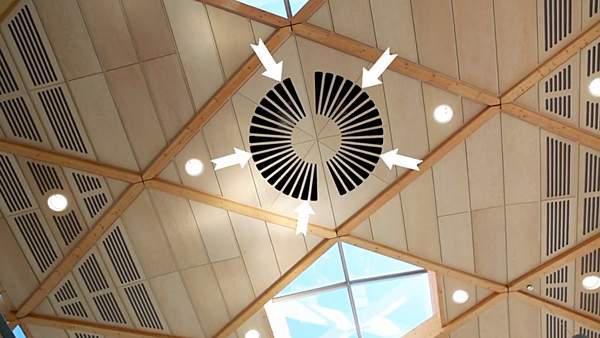
One of the four ventilation outlets in the ceiling, which allows warm, stale air to escape
> Find out more about our ventilation and heating system.
Those magnificent big wooden beams are actually ‘glulam’ – they’re made from smaller pieces of timber (FSC spruce in this case, certified by the Forest Stewardship Council) laminated/glued together to create larger beams.
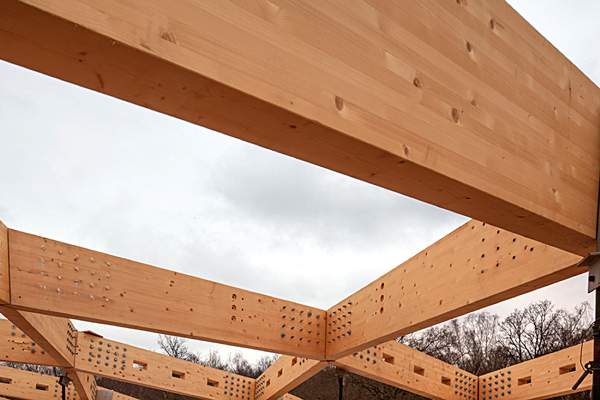
Close-up image of the glulam roof beams, during construction
The combination of the barrel-vault design and the interconnecting glulam beams creates an incredibly strong but lightweight roof structure.

Constructing the diagrid glulam roof
We did originally consider using curved glulam beams, but the design team calculated that the arching effect could just as easily be achieved by joining together straight beams, and at a lower cost. So that’s what we did.
> Find out more about the wood used in the Living Planet Centre.
Another early concern we had with the diagrid idea was that it requires a larger number of joints, or ‘nodal connections’, using steel joining plates. And that adds a considerable amount to the overall cost of the roof. So we swapped from a smaller to a larger-scale grid, with longer beams and fewer joining nodes – just one more example of how we saved materials and money.
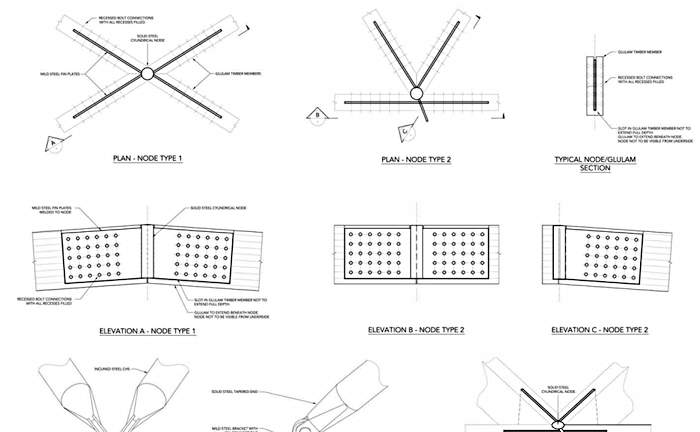
Architectural drawings for roof joint 'nodes'
There’s also a lot more going on between and behind that timber grid than you might think.
It was always intended that the Living Planet Centre roof would be a structurally-efficient and column-free arch, but this presented some challenges for the design team.
In a building with a relatively thin shell (known as ‘low-inertia’ in the trade), the structure doesn’t have the same thermal or acoustic properties as solid concrete, stone or brick might have. Which means it’s not as good at holding in heat (or sound) – and that has implications for the building’s energy efficiency, and acoustics.
We needed to add some thin but effective ‘thermal mass’ to absorb and retain heat when required, and help stop the indoor temperature dropping too much on cold days or at night.

The extra thermal mass added by Energain tiles in the ceiling absorbs heat and slowly releases it as the building cools
The solution we opted for was using Energain tiles, which sit neatly behind the birch ply panels inside the diamond shapes in the roof grid, and absorb and release heat in very clever ways.
> Find out more about Energain and thermal mass in the Materials section.
Combined with just the right amount of acoustic damping, that’s how we made the roof design work to help solve our thermal and sound issues.
> Find out more about the building's acoustic damping in the Interior Design section.

Example of exposed 'fair-faced' concrete soffits
We deliberately left some concrete exposed inside the building too – for instance the ‘soffits’ (underside) of the mezzanine balcony – which saved on paint and other decorating materials.
We happen to like the look of this crisp, smooth-finished concrete (‘fair-faced’ concrete, as it’s called), and it’s also very useful as additional thermal mass, helping regulate the room temperature.
> Find out more about the concrete used in the Living Planet Centre.

Ground floor, with trees
The other things you can’t help but notice in the middle of the building are the trees! Three extra-large ‘weeping figs’ – which are suitably slow-growing, indoor-thriving trees from European sources – stretch all the way from their large ground-floor containers up to well above the height of the mezzanine.
(Sir David Attenborough helped with the planting of these trees at our opening ceremony.)

Sir David Attenborough, helping plant our indoor fig trees at the opening of the Living Planet Centre

As well as being great for removing air pollutants and improving our everyday working experience, this very visible foliage also strongly reinforces the idea that this truly is a Living Planet Centre.
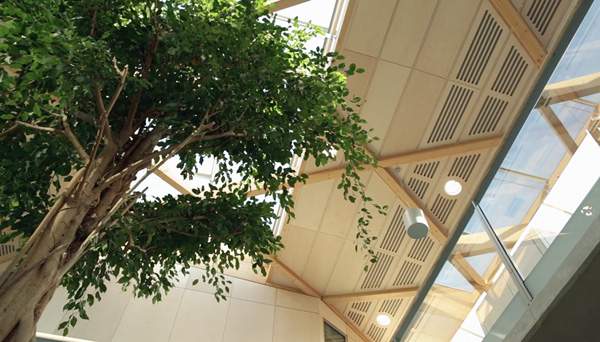
PUBLIC SPACES
There are three main public and semi-public areas inside the Living Planet Centre.
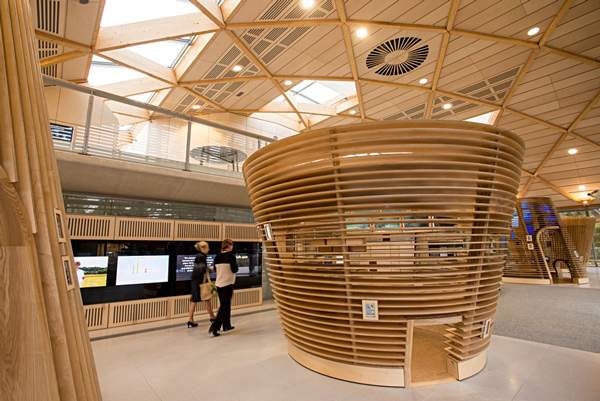
The WWF Experience at the Living Planet Centre
1) The WWF Experience, our visitor area, designed by Jason Bruges Studio.
> Find out more in the WWF Experience section and in the ‘Life at the Living Planet Centre’ section.

Pupils from a local primary school in our Learning Zone
2) Our specially-designed Learning Zone is aimed mainly at schools and is essentially kitted out like a classroom (with the emphasis on fun as well as learning), including smart boards, tables, sinks and activity areas.
> Find out more about our education work in the Life at the Living Planet Centre section.

The multi-purpose Cisco Auditorium at the Living Planet Centre
3) Our well-equipped, state-of-the-art 152-seat auditorium has been designed so that it's adaptable for all kinds of public and private uses.
> Find out more in the Life at the Living Planet Centre section.
WORKING SPACE
The rest of the building is given over to an open-plan workspace for more than 300 people – planning for which began way before the Living Planet Centre was constructed.
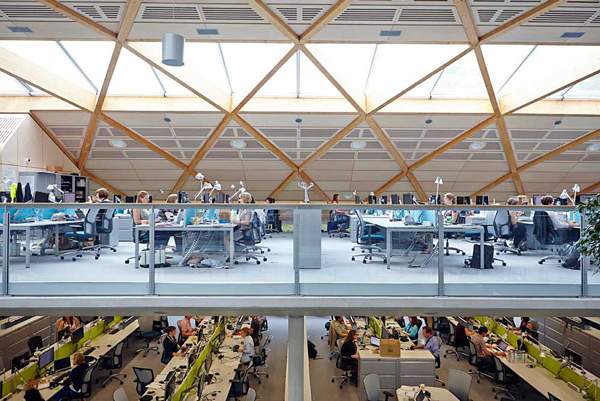
Section view showing both working levels, ground and mezzanine
We started working with AMA Alexi Marmot Associates back in our old Panda House office, to examine the way we worked and how it could be improved in our new building.
AMA’s surveys revealed, for one thing, that only between 40-60% of the desk space in Panda House was being used at any one time.
So they came up with three possible working scenarios for the new office, based on varying degrees of ‘hot-desking’.
Hot-desking is the idea that people don’t automatically have dedicated areas or desks, or even a desk at all, and all possible workspaces should be used more effectively.
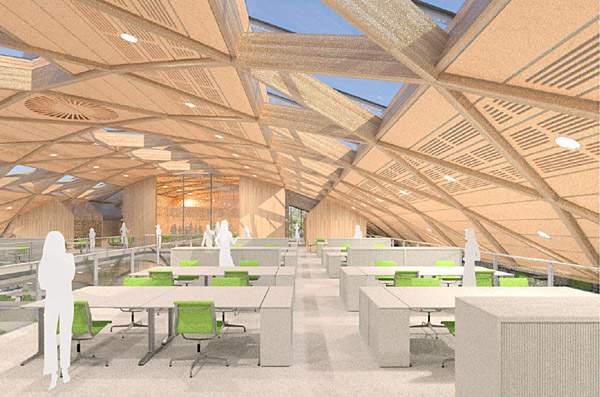
Computer graphic of open-plan office area on mezzanine level
One scenario was that the directors would still have their own offices, but everyone else would hot-desk. But in the end we opted for the more egalitarian ‘deep-green’ plan: absolutely everyone would hot desk (even our chief executive).
We did allocate teams to certain 'zones' so they could work nearer together and have a home for their relevant storage.
To avoid a situation where lots of desks weren’t being used, we agreed there should be fewer workstations than employees. This also allows (and encourages) flexible and collaborative working, in and away from the office space.

No more corded telephones, bulky desktop computers or cluttered desks
Our new IT system and communications tools have made this possible. Laptop computers and headset phones have replaced desktop PCs and plug-in landlines.
There’s also minimal cabling to be seen around the workspace, largely thanks to the wireless network, which allows WWF colleagues and guests to log in using any mobile device.

> Find out more about our IT and communications system.
There’s a clear-desk policy for everyone working in the building, to minimise clutter and maximise efficiency.
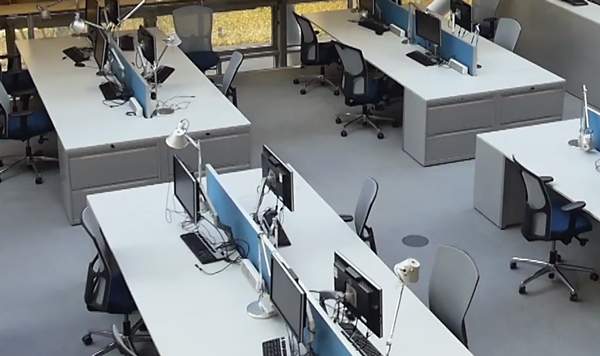
The idea is that you only bring in what you need for that day’s work and take everything away when you leave. Everyone’s given a ‘smart box’ to transport their essential items and there are lockers for overnight storage.
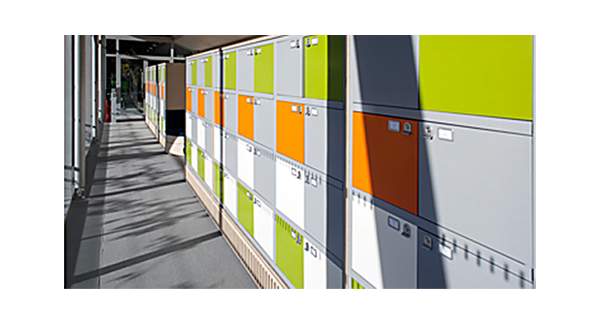
Even the storage lockers look good at the Living Planet Centre
Although it’s very different from the way we worked at our old offices, we’ve found that the building lends itself to clear desk working and it happens naturally – with just an occasional need for reminders.
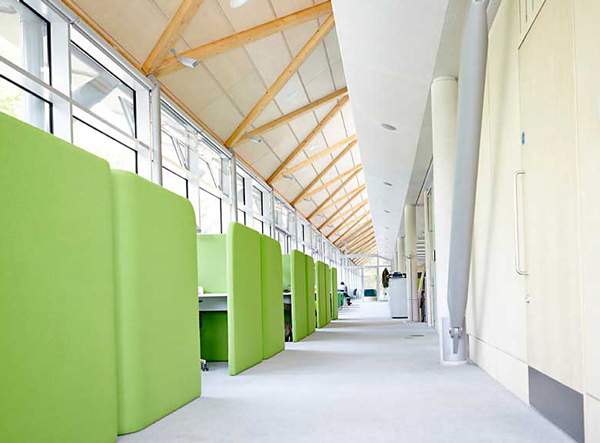
Some of our 'quiet booths' for private working
There are spaces for private working too (‘quiet booths’ or ‘concentration zones’) and a few small rooms that can be booked.

Meeting rooms are booked and accessed electronically (and all named after places where WWF works – Amazon, Arctic, Borneo etc)
There are 17 meeting rooms of various sizes, as well as the boardroom, and we use our online room-booking system to help us get the most out of these spaces. If the booked host doesn't log into a room then it's made available for others to use.
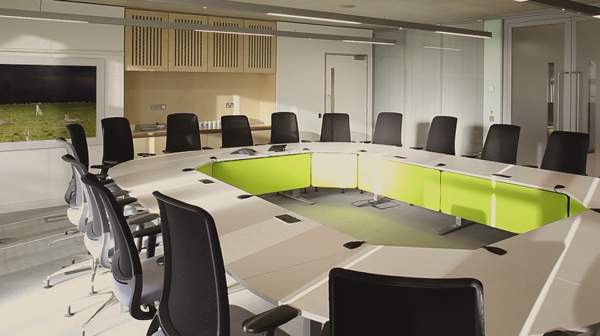
In the boardroom at the Living Planet Centre
There are various ‘breakout’ areas for impromptu meetings, and comfy sofas for smaller groups or one-to-one discussions.

For more social interactions there’s what we call the ‘meet-and-eat’ area at the far end downstairs – a particularly bright, airy space, with a small kitchen, hot-drink facilities and places to chat informally.
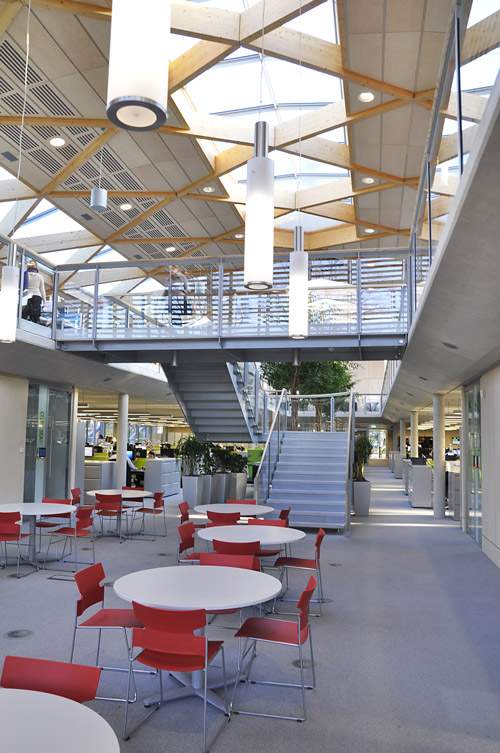
Our 'meet and eat' tables, next to our small kitchen and hot drinks area
People are encouraged to eat their lunch together here, rather than alone at their desks, as often used to be the case. We think it’s healthier, as well as more sociable and better for team-building.

Our tea and coffee area at the back of the building, with doors leading out to the terrace
And when the weather’s good we can step outside onto the paved terrace area at the back – and feel even closer to nature.
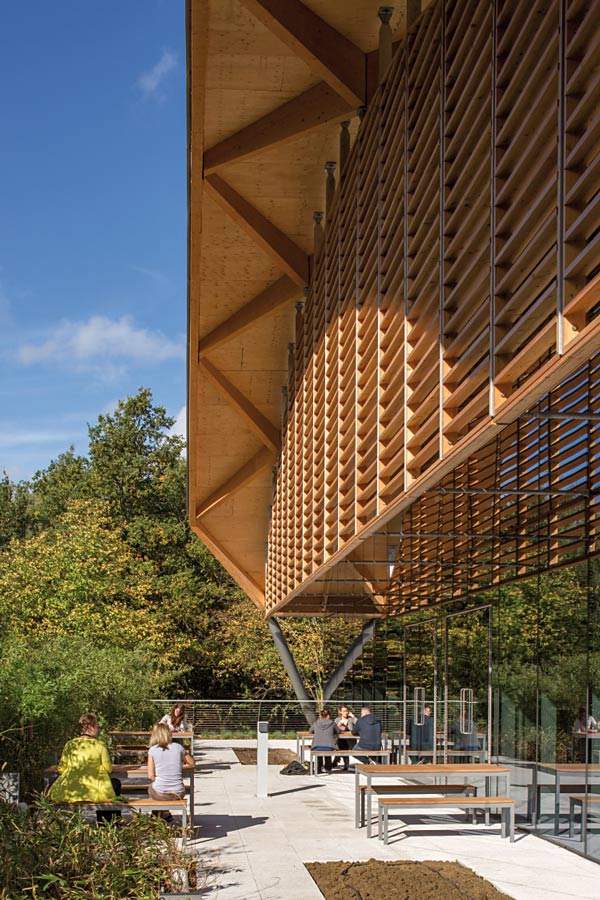
The rear of the Living Planet Centre, with desks for outdoor working, meeting or having lunch
One advantage of the office being up on stilts above the car park is that the views are that much better! In places, the tree canopy outside is at eye-level. Our thoughtful architects also carefully located the windows to give us the best views out over the local woods and canal.
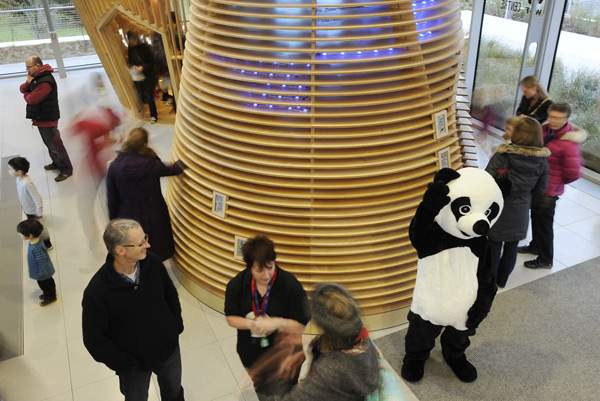
For the first time at WWF-UK we've opened our doors to the public – welcome to the WWF Experience!
We always knew we’d have some kind of ‘visitor facility’ or public exhibition area in the Living Planet Centre – it was a key requirement of the original Rufford Foundation funding. But we just weren’t sure at first what form it should take.
It’s not something we’d ever done before. Our old Panda House building was particularly ill-equipped (and not especially appealing) for visitors.
So there were lots of differing opinions about what our new visitor experience should be like, and the logistics of how we’d run it.
For instance, who should the target audience be, should it be open every day, should we charge for admission, and so on.
In the end we opted for a free public exhibition, ambitiously covering all the main strands of our global work and aimed at a wide audience – primarily with families and schoolchildren in mind.

Families and children are particularly encouraged to come and enjoy the WWF Experience
We have lots of fascinating information to offer – wild facts, stories and images – but we needed an eye-catching and memorable showcase to present our work.
That’s where Jason Bruges Studio came in...
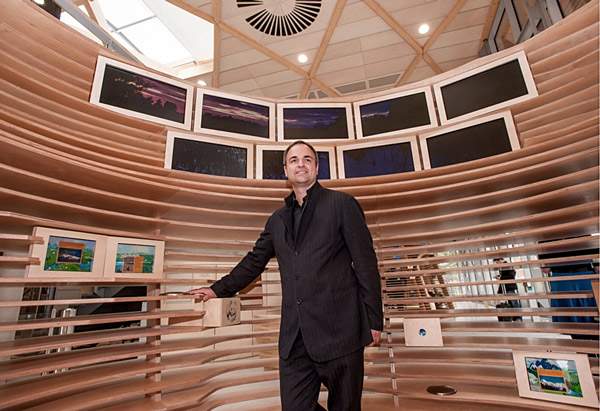
Designer Jason Bruges inside one of the four WWF Experience zones that he and his studio created for the Living Planet Centre
‘Jason Bruges Studio had already been involved with WWF when they contributed to our restyling old panda coin-collecting boxes in an unexpected and creative way.
Jason Bruges Studio's fascinating, if slightly unnerving, 'Panda Eyes' artwork – created for our 2009 Pandamonium exhibition, and now on display in the Living Planet Centre
Jason Bruges Studio's ‘Panda Eyes’ exhibit – with 100 mini pandas revolving to follow visitor movements – now takes pride of place in our gallery space on the entrance level, having been kindly donated to us by our former chairman Ed Smith.
We commissioned Jason Bruges Studio to design and build four ‘zone’ structures for the WWF Experience in the entrance area of the Living Planet Centre.

Early carved-wood scale model of the flowerpot-shaped zones designed by Jason Bruges Studio
Each of the four zones reflects a different environmental theme, and key area of WWF’s work – namely:
WILDLIFE zone – catch glimpses and fascinating facts about rare species...
FORESTS zone – experience the sights and sounds of a day in a rainforest...
RIVERS zone – follow the flow of a river from source to estuary...
OCEANS zone – see the amazing variety of creatures and plants at sea...
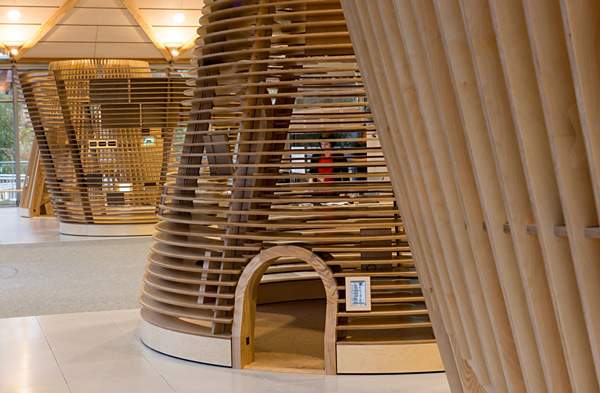
Our four Visitor Experience zones are just inside the entrance to the Living Planet Centre
The four cone-shaped constructions, with their slatted timber ‘fins’ neatly echoing the louvred facade outside the building, were designed to be immersive, interactive ‘sensory feasts’ for visitors of all ages.

Our visitor experience is wheelchair-friendly and suitable for all age groups
All four zones are accesible for wheelchair-users. Low-height entrances are also included to encourage children to crawl through and explore. The timber frames, all sustainably sourced, are designed to be touched.

Lots for young ones to do, see and learn...
The zones reflect the sights, sounds and ambience of the particular environments.
As visitors enter each zone, low-energy video screens begin running footage of the natural world, which was developed in conjunction with the BBC and other partners.
Bronze casts, based on real natural features, also help people interact with each environment.

Lioness paw in bronze – one of André Masters' tactile animal casts
We commissioned sculptor André Masters to create seven unique bronze casts based on rare or endangered species – including lion, tiger and monkey paws, a sea turtle flipper and a conch shell.
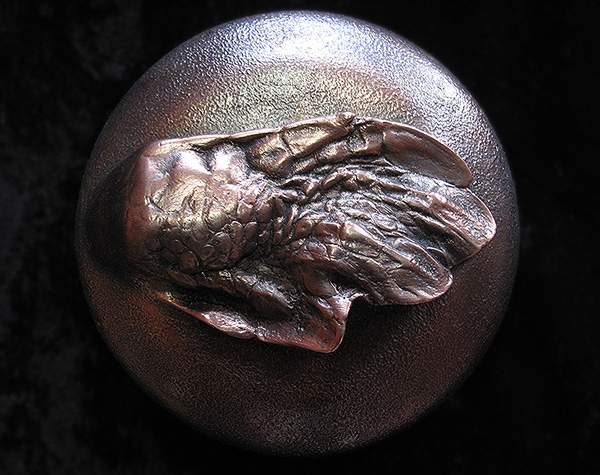
Sea turtle flipper – another of André Master's wildlife-themed bronze casts
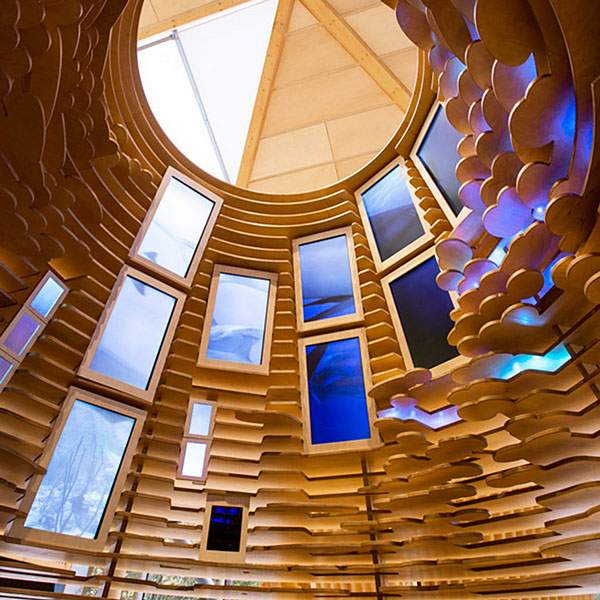
Inside the Oceans zone at the WWF Experience
Each zone also has its own specially-written soundtrack created by acclaimed composer William Goodchild. They're all distinctive but subtly complement each other.
The soundtracks and background noises are also triggered when visitors enter the zone, and are played through hidden ‘feonic’ speakers.

This efficient audio technology effectively turns the whole wooden structure of the zone into a giant speaker, producing an enveloping but focused sound that doesn’t travel too far into the rest of the building.
Concealed low-energy LEDs provide mood-lighting effects to accompany the video and audio.

Relevant and thought-provoking quotes inspired by the themes of each zone are etched into the wooden fins inside the structures.
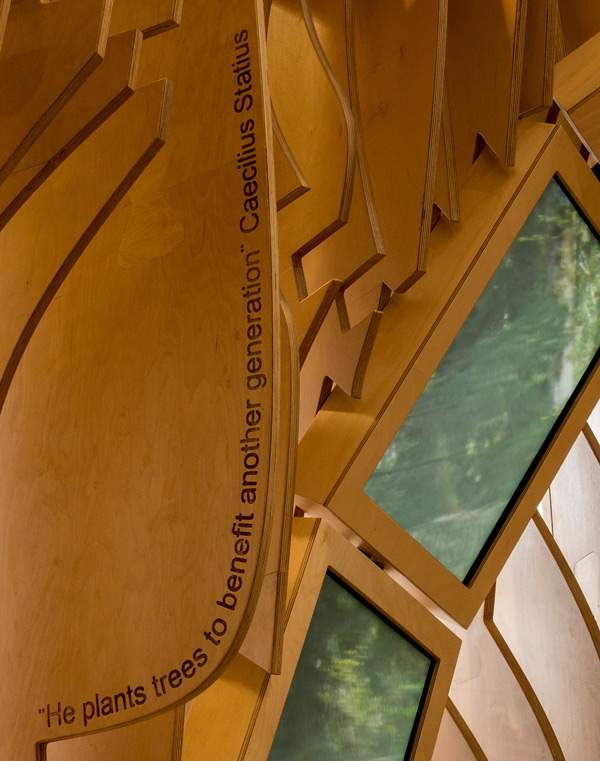
A quick 30-second video tour of the WWF Experience
All visitors to the WWF Experience, adults and children alike, are also encouraged to take part in quizzes, 'treasure hunts' and other interactive games designed to educate and inspire.
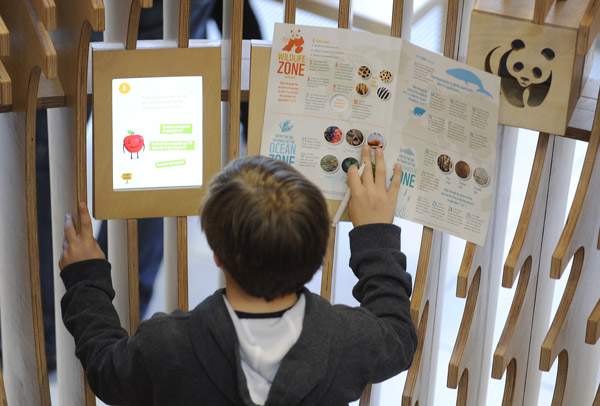
Doing one of our quizzes...

Inside the Forests zone at the WWF Experience

Inside the Rivers zone
On-site construction of the Living Planet Centre began at Woking's Brewery Road council car park location in March 2012, and took just under 18 months to complete.
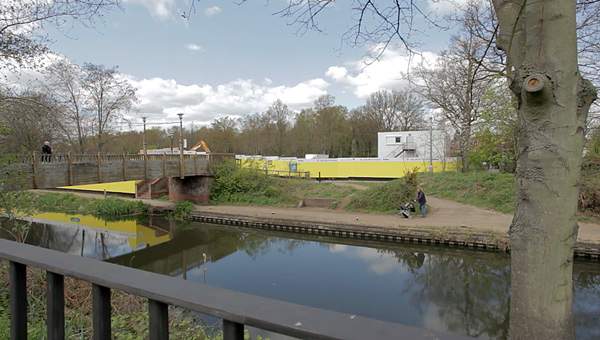
View across Basingstoke canal as work begins on-site

The early construction site, showing driven concrete pile foundations
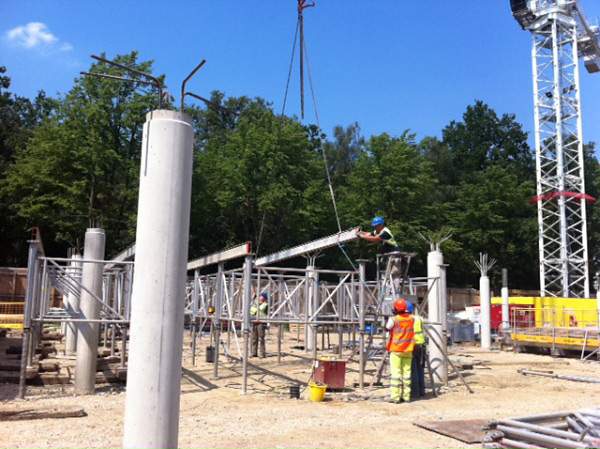
Supporting columns at ground level, early in construction process
We selected Willmott Dixon to be our main building contractor, from a list of 14 companies. They are widely known as one of the first construction companies to put sustainability at the heart of their building work.

On-site with the builders, Willmott Dixon
They weren’t simply going to be ‘the builder’ on this job – it was much more than that.
We engaged them on a ‘design and build’ contract, which means they were in overall charge of making sure this was going to be the greenest, lowest-carbon, most sustainable building they could possibly construct – meeting BREEAM ‘Outstanding’ standards – without going over our budget.

They were helped in this ambitious endeavour by the skilled planning of Atelier Ten, and together they made an impressively successful team.
They were also assisted by Sturgis Carbon Profiling, who came to be affectionately nicknamed ‘the carbon police’.
CARBON MEASURING
One of the first tasks was to analyse the ‘embodied carbon’ emissions (or carbon dioxide equivalent) for every material and component used in the building.
The carbon profiling calculations were largely based on what’s known as the CEN/TC 350 standards for sustainable construction.
These standards cover four separate stages in the life of a building:
1. PRODUCT MANUFACTURE – including extracting raw materials and processing them into usable components.
2. CONSTRUCTION – including transport of the components to the site and assembly on-site.
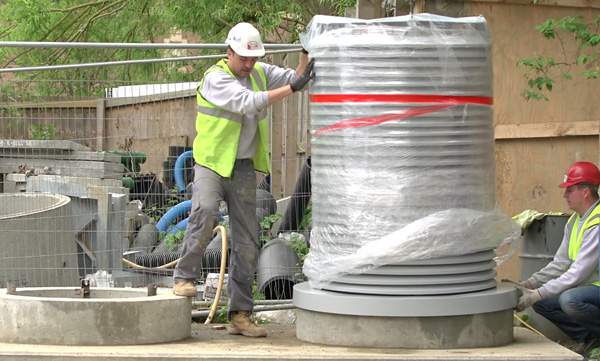
Top of the earth ducts being installed on-site
3. IN-USE – this complex stage covers ongoing maintenance, repair and replacement of products, as well as their long-term energy and water use.
4. END-OF-LIFE – when the building is eventually dismantled and the component parts are taken away and recycled or disposed of.
In other words it doesn’t just involve calculating how much carbon each component would emit in its working lifetime – a lightbulb’s use of electricity, for instance. It also includes the carbon emitted when that component was originally produced, then transported, and whenever it’s replaced, and ultimately how it’s disposed of.
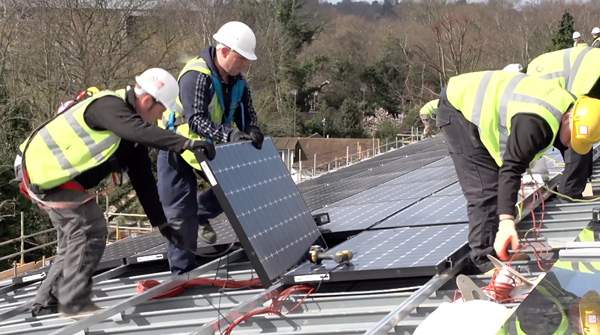
The total figure, for all the component parts, would be the ‘whole-life’ emissions of the Living Planet Centre (based on the building’s life being 60 years, though it’s built to last longer than that).

'Whole-life' carbon emission assessments for the Living Planet Centre
The Living Planet Centre is, in fact, the first building in the UK to have undergone this kind of full, whole-life carbon assessment.
The Living Planet Centre is also unique in that it’s been ‘designed for deconstruction’. It means at the end of its life the Living Planet Centre can be dismantled (not just demolished) and the component parts reused or recycled.
Even before construction began, Sturgis’s research and recommendations had managed to reduce the predicted whole-life carbon impact of the Living Planet Centre by 30% compared with the original design.
But now it was up to Willmott Dixon to push that down even further during the build, if we were to achieve that hard-to-get BREEAM Outstanding rating.

As Willmott Dixon’s sustainability manager Richard Bartlett said to Building magazine, stringent standards had to be met: “With any job there are aspirations that fall by the wayside. But here, these were contractual obligations.”
GREEN BUILDING SITE
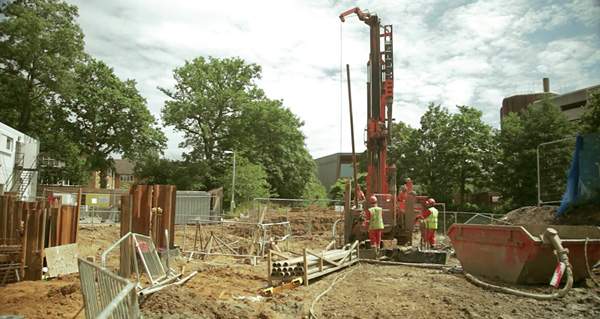
We even monitored the building site itself, making sure it was as low-carbon, low-waste and sustainable as possible.
For instance...
• 99% of construction waste didn’t end up in landfill. We made sure ‘take-back’ schemes were used, so that excess or unused materials could be returned to suppliers/manufacturers, and we did a lot of recycling.
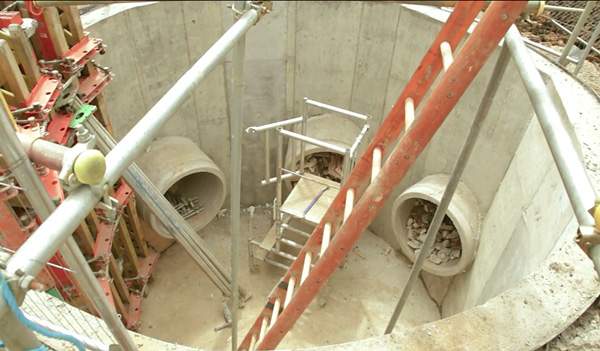
Some spare building materials went to the local Lighthouse project in Woking, helping turn a derelict building into a community centre. The remaining 1% of the site waste was classified as ‘hazardous’ and was subject to the CL:AIRE process for contaminated land.
• Waste was minimised on site using agreed incentives with subcontractors. For instance, there were skip targets and economic rewards if fewer skips were filled. In the end we filled 72 skips, generating 70% less waste than we’d planned for.
• We encouraged off-site construction of various components – including the roof – to maximise efficiency and minimise waste.

• Willmott Dixon secured an early connection to the electricity grid, which helped minimise the use of diesel generators on site.
• The temporary on-site buildings were well-insulated ‘eco-cabins’, fitted with low-energy lights, and the drying rooms had dehumidifiers, drastically reducing energy load during a very wet year. They even harvested rainwater from their roofs on the site.
• Site and security lights were low-energy LEDs, and non-essential lights were on timer switches. Non-essential areas of the site were automatically switched off out of hours.
All on-site energy and water consumption were closely monitored. During the construction process we managed to reduce water to around half our initial target.
ONGOING IMPROVEMENTS
The team were constantly on the lookout for ways to lower the Living Planet Centre’s carbon profile – without increasing costs or reducing quality.
One example was the glue to be used in the wooden glulam beams. Originally this was going to be a synthetic adhesive with a high carbon footprint, which would have meant the wood beams wouldn’t have been any lower-carbon than a steel structure. Sturgis suggested swapping to a natural polymer glue and the carbon count dropped significantly.

The original design spec also said the aluminium in the window frames should have 30% recycled content. But Willmott Dixon found an alternative supplier that could provide frames with 80% recycled aluminium.
The carbon analysis didn’t always reveal predictable or intuitive results. Sometimes it turned out the carbon embodied in the manufacturing of an otherwise ‘eco’ product (an insulating material, say) could cancel out or even outweigh the long-term benefits of using that product.
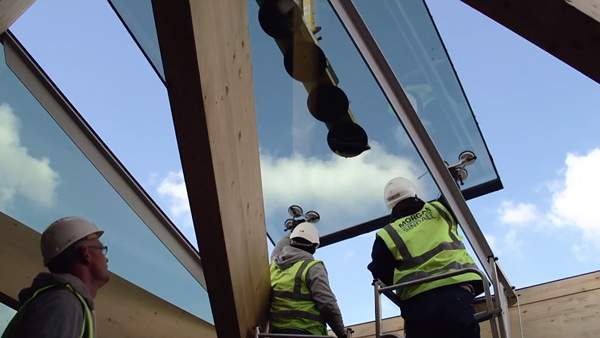
Take the windows again. ‘Whole-life’ analysis showed that triple-glazed windows were actually less carbon-efficient than simpler double-glazed units, even though they provided better insulation. The extra embedded carbon in the product itself outweighed the long-term energy savings. Not what you might expect.
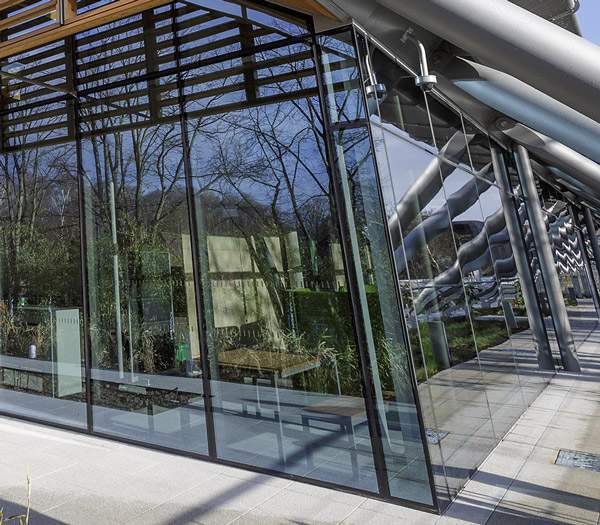
END RESULTS: LOW CARBON, HIGH SUSTAINABILITY
During the construction process, Willmott Dixon, Atelier Ten and the team managed to deliver a remarkable 42% reduction in the whole-life embodied carbon of the building, compared to a standard high-performance building.
That means we’re saving the equivalent of more than 5,400 tonnes of carbon over the building’s life. Without increasing the building’s costs.
Those kind of dramatic savings at the construction stage show that even good, sustainably-minded design can be improved by careful use of materials and building techniques.

The Living Planet Centre set new standards in carbon-efficient design and construction. In total it has a whole-life carbon footprint that’s just 35% of the average modern office building.

'Grand Designs' presenter and WWF Ambassador Kevin McCloud was impressed when he visited the construction site, confirming it was going to be an "exemplar building for offices and commercial buildings of the future."

